|
The
Honor Roll of Fallen Hispanics since 2001, Global War on Terrorism.
|
This
list is complied from The Department of Defense, The Military Times
(Army,
Navy and Air Force), the Iraq
War Heroes, Military City and the Washington Post web sites.
(Copyright
materials to be use only for personal non commercial use.)
Credits:
http://www.defenselink.mil/casualty.pdf
http://www.iraqwarheroes.com
http://www.militarycity.com/valor/honor.html
http://projects.washingtonpost.com/fallen
(Faces of the fallen.)
The
last two links have photos, BIOS, Newspaper articles and videos..
Extracted and Compiled by Rafael Ojeda: rsnojeda@aol.com
Tacoma,WA (20 pages
567 names)
2002:
(2)
APR
15,2002 Army SGT 1st
Class Daniel A. Romero age: 30, Lafayette, CO
Quandahar, Afghanistan
NOV
07,2002 Army Spc Pedro Lazaro Pena-Suarez
35, Miami, FL Kuwait
2003:
(72)
|
FEB
23,2003 Army SPC Rodrigo Gonzalez-Garza
26, (Nuevo Leon,MX) San
Antonio, TX Kuwait
MAR
21, 2003 Marine LCPL Jose Gutierrez 22,
Los Angeles, CA Umm Qasar,
Iraq (Guatemala)
MAR
23, 2003 USAF 1st Lt Tamara Archuleta 23, Las Lunas, NM
Afghanistan
MAR
23, 2003 Army Pvt Ruben Estrella-Soto 18, (Cuidad Jaurez,MX) El Paso TX
Nasiriyah, Iraq
MAR
23, 2003 Army CWO Johnny
Villareal-Mata 36, Pecos, Amarillo, TX Nasiriyah, Iraq
MAR
23, 2003 Army Pfc Lori Ann Piestewa 23, Tuba City, AZ (Hopi Tribe &
Mexican)
Nasiriyah, Iraq
MAR
23, 2003 Marine Cpl Jose A. Garibay 21,
(Jalisco,MX) Costa Mesa, CA Nasiriyah, Iraq
MAR
23, 2003 Marine Cpl Jorge A. Gonzalez 20, Los Angeles, CA (Rialto)
Nasiriyah, Iraq.
MAR
23, 2003 Army Edward J. Anguiano 24, Brownville, TX
Iraq (MIA until Apr
24,2003)
MAR
25, 2003 Marine Pfc Francisco A. Martinez-Flores 21 Los Angeles, CA
(Native of Mexico)
Eupharates River, Iraq
MAR
27, 2003 Marine Cpl Robert Marcus Rodriguez 21, Queen, NY (Puerto Rico)
Eupharates River NW of Nasiriyah, Iraq.
MAR
27, 2003 Marine Lcpl Jesus A. Suarez del Solar 20, Escondido, CA (Native
of Mexico) Iraq.
MAR
28, 2003 Marine Sgt Fernando Padillo-Ramirez 36, Yuma, AZ (Native of
Mexico)
Nasiriyah, Iraq J(MIA
until Apr 10,2003)
MAR
29, 2003 Army Sgt Orlando Morales 33, Manati, Puerto Rico
Afghanistan
MAR
29, 2003 Army Pfc Diego Fernando Rincon 19, Conyer, GA (Native of
Columbia) Najaf Iraq.
|
MAR
30, 2003 Marine Capt Aaron J. Conterras 31, Sherwood, OR (HMLA-169 pilot)
Southern Iraq.
APR
02,2003 Army Msgt George A. Fernandez 36, El Paso, TX
Northern Iraq.
APR
03, 2003 Army Ssgt Nino D. Livaudais 23, Ogden, UT
Iraq.
APR
03, 2003 Marine Cpl Erik H. Silva 22, Chula Vista, CA
Iraq.
APR
04, 2003 Marine Sgt Duane R. Rios 25,
Griffith, IN Baghdad,
Iraq.
APR
07, 2003 Marine Lcpl Andrew Julian Aviles 18, Palm Beach, FL
Central Iraq.
Page
1 of
20 Honor
the Fallen.
APR
07, 2003 Marine Cpl Jesus Martin Antonio Medellin
21, Ft Worth, TX Central
Iraq.
APR
08, 2003 Army Pvt Juan Guadalupe Garza, Jr 20, Temperance MI (San
Benito,TX) Baghdad.
APR
11, 2003 Marine Ssgt Riayan A. Tejeda 20, New York, NY
(Native of Dominican Republic)
NE Baghdad, Iraq. (Posthumously Citizenship).
APR
12, 2003 Marine Cpl Jesus A. Gonzalez 22, Indio, CA (Native of MX)
Baghdad, Iraq.
APR
13, 2003 Army Spc Gil Mercardo 25, Paterson, NJ (Isabela, PR)
Iraq
APR
14, 2003 Marine Cpl Armando Ariel Gonzalez 26, Hileach, FL (Native of
Cuba) Southern Iraq.
APR
17, 2003 Army Cpl John T. Rivero 23, Tampa, FL
Kuwait.
APR
25, 2003 Army 1st Lt Osbaldo Orozco 26, Delano, CA
Iraq
APR
28, 2003 Army First Sgt Joe J. Garza 43, Robstown, TX
Baghdad, Iraq.
APR
28, 2003 USAF A1C Raymond Losano 24, Del Rio, TX
Afghanistan.
MAY
12, 2003 Marine PFC Jose Franci Gonzalez-Rodriguez
19, Norwalk, CA Iraq.
MAY
18, 2003 Marine Cpl Douglas Jose Marenco Reyes
28, Chino, CA Smawah,
Iraq.
MAY
28, 2003 Marine Cpl Jose Amancio Perez III 22, San Diego, TX
Taji, Iraq.
JUN
03, 2003 Army Sgt Atanacio Haro Marin 27, Baldwin Park, CA
Balad, Iraq.
JUN
06, 2003 Army Sgt Melvin Y. Mora 27,
Columbia, Missouri
JUN
26, 2003 Army PR National Guard Spc Richard P. Orengo 32, Toa Alto, PR
Najir, Iraq.
(Bronze
Star & Purple Heart)
JUN
27, 2003 Army Cpl Tomas Sotelo, Jr 20, Houston, TX
Baghdad, Iraq.
JUN
28, 2003 Army Spc Kelvin E. F. Gutierrez 21, Anasco,
PR Orgun-E,
Afghanistan
JUL
09, 2003 Army Melissa Valles 26, Eagle Pass, TX Balad,
Iraq.
JUL
13, 2003 Army Sgt Jaror C. Puello-Coronado 36, Born: Dominican Rep. Pocono
Summit, PA
Camp Edson, Iraq.
JUL
16, 2003 Army Spc Ramon Reyes-Torres 29, Caguas,
PR Baghdad, Iraq.
JUL
17, 2003 Navy HC3Class David J. Moreno 26, Gering NB
Hamishiyah, Iraq.
(Pediatraic Wing at Balboa Naval Hosp. San Diego, CA named in his
honor).
JUL
24. 2003 Army Sgt Juan M. Serrano 31, Manati, PR
Baghdad, Iraq.
JUL
24, 2003 Army Ssgt Hector R. Perez 40, Corpus Christi, TX
Hawd, Iraq.
JUL
26, 2003 Army Spc Wilfredo Perez, Jr 24,
Norwalk, CT (Queens,NY) Baghdad,
Iraq.
AUG
06, 2003 Army Zeferino Eusebio Colunga 20, Bellville, TX
Iraq.
(Died at Homburg University Hosp. Germany).
AUG
25, 2003 Army Pfc Pablo Manzano 19, Heber, CA
Dogwood, Iraq.
AUG
27, 2003 Army Spc Rafael L.
Navea 34, Pittsburg, PA Fallujah,
Iraq.
SEP
11, 2003 Army Sgt Henry Ybarra III 32, Austin, TX
Balad, Iraq.
SEP
18, 2003 Army Spc Richard Arriaga 20, Ganado, TX
Tikrit, Iraq.
Page
2 of
20 Honor
the Fallen.
SEP
25, 2003 Army Capt Robert L. Lucero 34, Casper, WY
Tikrit, Iraq.
OCT
01, 2003 Army Analaura Esparza Gutierrez 21, Houston, TX
(Born in MX) Tikrit,
Iraq.
(see Jul 09,2003 Milissa Valles’s articles).
OCT
01, 2003 Army Spc Tamra J. Ramos 24, Quakertown, PA
WA D.C.
OCT
06, 2003 Army 2nd LT Richard Torres 25, Clantsville, TN
Baghdad, Iraq.
OCT
13, 2003 Army Pfc Jose Casanova 23, El Monte, CA
Baghdad, Iraq.
OCT
24, 2003 Army Spc Jose L. Mora 26, Bell Gardens, CA
Samaria, Iraq.
OCT
26, 2003 Army Pvt Joseph R. Guerrera 20,
Dunn, NC Baghdad, Iraq.
OCT
26, 2003 Army Pfc Steven Acosta 19, Calexico, CA
(Mexicali,MX) Baghdad,
Iraq
OCT
30, 2003 Army Sgt Michael Paul Barrera 28, Von Ormy, TX
Baqubah, Iraq.
NOV
02, 2003 Army Ssgt Paul A.(Tony) Velazquez
29, San Diego, CA Fullujah,
Iraq.
NOV
02, 2003 Army Sgt Frances M. Vega 20, Ft Buchanan, PR
Fallujah, Iraq.
NOV
02, 2003 Army Sgt Joel Perez 25, Rio Grande, PR
Fallujah, Iraq.
NOV
04, 2003 Army Sgt Francisco Martinez 28,
Humacao, PR Baghdad, Iraq.
NOV
05, 2003 Army Sgt 1st Class Jose A. Rivera 28, Bayamon, PR
Mumuhdyah, Iraq.
NOV
08, 2003 Army Ssgt Mark D. Vasquez 35, Port Huron, MI
Fullujah, Iraq.
NOV
08, 2003 Army Sgt Linda C. Jimenez 39 Brooklyn, NY (Phoenix,AZ)
Walter Reed Hospital, WA D.C.
NOV
11, 2003 Army Spc Genaro Acosta 26, Fair Oaks, CA
Taji, Iraq.
NOV
14, 2003 Army Spc Ivrving Medina 22,
Middletown, NY (Mexico City,MX) Baghdad,Iraq.
NOV
28, 2003 Army Sgt Ariel Rico 25,
El Paso, TX Mosul, Iraq.
DEC
28, 2003 Army Pvt Rey D. Cuervo 24, Laguna Vista, TX
Baghdad, Iraq.
DEC
28, 2003 Army Capt Ernesto M. Blanco 28, San Antonio, TX
Qaryat Ash Shababi, Iraq.
(Bronze
Star)
2004:
(100)
JAN
01, 2004 Army Sgt Dennis A. Corral 33, (born: San Diego, CA) Kearny, NE
Baghdad, Iraq.
JAN
14, 2004 Army Sgt Roland L. Castro 26,
San Antonio, TX Camp Cedar II,
Iraq.
JAN
21,2004 Army Spc
Gabriel T. Palacios 22, Lynn,
MA (Nicaragua) Iraq.
JAN
29, 2004 Army Pfc Luis A. Moreno 19, (Born: Dominican Rep.) Bronx, NY
Baghdad, Iraq
JAN
31, 2004 Army Sgt Eliu A. Miersandoval 27, (Born:Durango,MX) San
Clemente,CA
Kirkuk, Iraq
JAN
31, 2004 Army Cpl Juan Carlos Casral Banuelos 25, (Born: Jeres,MX)
Emporia, KS (Ogden UT) FEB
01, 2004 Army Pfc Amando Soriano 20, Houston, TX
Haditha, Iraq.
FEB
10, 2004 Army USAF Msgt Jude C. Mariano 39, Vallejo, CA
Doha, Qutar.
Page
3 of
20 Honor
the Fallen.
FEB
11, 2004 Army Pfc William C. Ramirez, 19 Portland, OR
Baghdad, Iraq.
FEB
12, 2004 Army Spc Erik Ulysses Ramirez 31, San Diego, CA
Gireb, Iraq.
FEB
16, 2004 Army Michael M. Merila 23, Sierra Vista, AZ (FT Lewis,WA) Talifar,
Iraq.
MAR
13, 2004 Army Spc Jocelyn L. Carrasquillo
28, Wrightsville, NC Iraq.
MAR
26, 2004 Marine Pfc Leroy Sandoval, Jr
21 Houston, TX Fullujah,
Anbar Province Iraq.
APR
04, 2004 Army Spc Robert R. Asiaga 25,
Midland, TX Baghdad, Iraq.
APR
04, 2004 Army Spc Israel Garza 25, Lubbock, TX
Baghdad, Iraq.
APR
05, 2004 Marine Pfc Christopher Ramos 26, Albuquerque, NM
Anbar Prov. Iraq.
APR
06, 2004 Navy PO 3rd Class Fernando A. Mendez-Aceves 27, (Born:
Mex. City, MX) Ponce, PR
Ramadi, Iraq.
APR
06, 2004 Army Sgt Gerardo (Chito) Moreno 23, Terrell, TX
Ashula, Iraq.
APR
06, 2004 Army Isaac Michael Nieves 20, Unadilla, NY
Bani Saad, Iraq. (Bronze Star, Purple Heart
National Def. Service Medal and GWOT medal).
APR
09, 2004 Marine Lcpl Elim
Torrez III 21 Veribest, TX Iraq.
APR
10, 2004 Army Spc Adolfo C. Carballo 20, Houston, TX
Baghdad, Iraq.
APR
11, 2004 Marine Cpl Daniel R. Amaya 22, Odessa, TX
Anbar Prov. Iraq.
APR
11, 2004 Marine Pfc George D. Torres 23 Long Beach, CA
Anbar Prov. Iraq
APR
11, 2004 Marine 1st LT Oscar Jimenez 34, San Diego, CA
Anbar, Prov. Iraq (Natl. Def Ser. Medal)
APR
13, 2004 Army Ssgt Victor A. Rosales-Lomeli 29, (Born: Mex.City, MX)
Westminster, CA Iraq.
APR
14, 2004 Army Sgt Christopher Ramirez 34, McAllen, TX
Anbar Prov. Iraq.
APR
15, 2004 Marine Ssgt Jimmy J. Arroyave 30, Woodland, CA
Ramadi, Iraq.
APR
17, 2004 Marine Lcpl Ruben Valdez, Jr 21 San Diego, TX
Anbar Prov. Iraq.
APR
27, 2004 Army Ssgt Abraham D. Pena[Medina
32, Los Angeles, CA Baghdad,
Iraq.
MAY
01, 2004 Army Spc Ramon C. Ojeda 22, Ramona, CA
Amarah, Iraq.
MAY
01, 2004 Army Ssgt Oscar D. Vargas-Medina
32, Chicago, IL Amarah,
Iraq.
MAY
08, 2004 Army Spc Isela Rubalcava 25, El Paso, TX (3rd Stryker
Brigade Ft Lewis,WA)
Mosul, Iraq. ( See Jul 09, 2003 Melissa Valles BIOS & Articles)
MAY
15, 2004 Army Ssgt Rene Ledesma 34, Abilene, TX
Baghdad, Iraq.
MAY
18, 2004 Army Cpl Marcos O. Nolasco 34, (Born: Guadalajara,MX) Chino, CA
Baji, Iraq.
MAY
19, 2004 Marine Cpl Rudy Salas 20, Baldwin, CA
Anbar Prov. Iraq.
MAY
23, 2004 Marine Jorge A. Molina Bautista 37, Rialto, CA
Anbar Prov. Iraq.
MAY
25, 2004 Army Pfc Richard H. Rosas 21, Saint Louis, MI
Fullujah, Iraq.
MAY
29, 2004 Marine Lcpl Rafael Reynosa-Saurez 28, Santa Ana, CA
Anbar Prov. Iraq.
Page
4 of
20 Honor
the Fallen.
MAY
29, 2004 Marine Lcpl Benjamin R. Gonzalez 23, Los Angeles, CA
Ramadi, Iraq.
JUN
21, 2004 Marine Lcpl Juan Lopez 22, Whitfield, GA (Mexico) Anbar Prov.
Iraq.
JUN
22, 2004 Marine Lcpl Pedro Contrerras 27, Houston, TX Anbar Prov. Iraq. (Natl
Def.Ser medal)
JUN
26, 2004 Marine Lcpl Manuel A. Ceniceros 23, Santa Ana, CA
Anbar Prov. Iraq.
JUL
05, 2004 Mrine Lcpl Michael S. Torres 21, El Paso, TX
Anbar Prov. Iraq.
JUL
11, 2004 Army Sgt 1st Class Linda Ann Tarango-Griess 33,
Sutton,Neb. (Clovis NM)
Samarra, Iraq. (Promoted to Msgt, awarded the Bronze Star &
Purple Heart).
JUL
12, 2004 Army Spc Juan M. Torres 25, Houston, TX
Bagram, Afghanistan.
JUL
14, 2004 Army Pfc Jesse L. Martinez 20, Tracy, CA
Talafar, Iraq.
AUG
01, 2004 Army Spc Armando Hernandez 22, Hesperia, CA
Samarra, Iraq.
AUG
02, 2004 Marine Sgt Juan Calderon, Jr
20, Weslaco, TX Anbar Prov. Iraq.
AUG
05, 2004 Army Sgt Moses D. Rocha 33, Roswell, NM (Orange Co. CA) Najaf,
Iraq (Purple Heart)
AUG 05, 2004 Marine Sgt Yadir G. Reynoso 27, Wapato, WA
Najaf, Iraq.
AUG
05, 2004 Marine Cpl Roberto Abad 22, Los Angeles, CA
Najaf, Iraq
AUG
12, 2004 Army Sgt Daniel Lee Galvan 30,
Moore, OK Salerno, Afghanistan
AUG
15, 2004 Marine Pfc Geoffrey Perez 24, Los Angeles, CA
Anbar Prov. Iraq.
AUG
15, 2004 Army Spc Mark Anthony Zapata 27, Edinburg, TX
Najaf, Iraq.
AUG
15, 2004 Marine Cpl Nicanor Alvarez 22, San Bernardino, CA
Anbar Prov. Iraq.
AUG
24, 2004 Marine Lcpl Jacob R. Lugo 21, Flower Mound, TX
Anbar Prov. Iraq.
AUG
25, 2004 Marine Cpl Alexandro S. Arredondo
20, Randolph, Mass
AUG
27, 2004 Army Pfc Luis A. Perez 19, Theresa, NY (East Chicago, Il )
Fallujah, Iraq.
AUG
28, 2004 Marine Sgt Edgar E. Lopez 27, Los Angeles, CA
Babil, Iraq.
SEP
03, 2004 Marine Lcpl Nicholas Perez 19, Austin, TX
Anbar Prov Iraq
SEP
06, 2004 USAF Capt John J. Boria 29, Baroken Arrow, OK
Doha, Qatar.
KC-135 Air Refueling Pilot. U.S. Air Force Academy Graduate.
SEP
06, 2004 Army Spc Tomas Garces 19, Welasco, TX
Baghdad, Iraq.
SEP
08, 2004 Army Spc Laruo G. De Leon
20, Floresville, TX Balad,
Iraq.
SEP
08, 2004 Marine Lcpl Cesar F. Machado Olmos 20, Spanish Fork, UT
Anbar Prov. Iraq.
SEP
08, 2004 Army Spc Michael A. Martinez
29, Juana Diaz, PR Baghdad,
Iraq.
SEP
24, 2004 Marine Lcpl Ramon Mateo 20, Suffolk, NY
Anbar Prov. Iraq.
SEP
27, 2004 Army Sgt 1st Class Joselito O. Villaneuva 36, Los
Angeles,CA Samarra, Iraq
(Purple Heart).
OCT
01, 2004 Army Sgt Michael Uvanni 27, Rome, NY
Samarra, Iraq.
Page
5 of
20 Honor
the Fallen.
OCT
12, 2004 Marine Pfc Oscar A. Martinez 19, North Lauderdale, FL (Born in
Dallas, TX)
(Parents from El Salvador). Anbar Prov. Iraq.
OCT
13, 2004 Army Lcpl Victor A. Gonzalez 19, Watsonville, CA
Anbar Prov. Iraq.
OCT
13, 2004 Army Spc Jaime Moreno 28, Round Lake Beach, IL
Baghdad, Iraq.
OCT
15, 2004 Marine Cpl William I. Salazar 26, Las Vegas, NV
Anbar Prov. Iraq.
OCT
15, 2004 Army Spc Jonathan J. Santos 22, Bellingham, WA
Karabilah, Iraq.
(Purple Heart, Natl. Def. Svc Medal and GWOT medal)
OCT
27, 2004 Army Cpl Billy Gomez 25,
Perris, CA Naka, Afghanistan
(Died at Landstuhl, Germany Reg.
Med. Ctr.
NOV
04, 2004 Marine Cpl Jeremiah A. Baro 21,
Fresno, CA Anbar Prov. Iraq.
NOV
05, 2004 Army Sgt Carlos M. Camacho-Rivera 24,
Carolina, PR Fallujah,
Iraq.
NOV
09, 2004 Marine Lcpl Juan E. Segura 26,
Homestead, FL Anbar Prov.
Iraq.
NOV
10, 2004 Marine Cpl Romolo J. Jimenez II
21, Miami, FL Anbar
Prov. Iraq.
NOV
10, 2004 Marine Sgt Gene Ramirez 28, San Antonio, TX
Anbar Prov. Iraq.
NOV
13, 2004 Army Spc Jose A. Velez 23, Lubbock, TX
Fullujah, Iraq.
NOV
14, 2004 Marine Cpl Andres H. Perez 21, Santa Ana, CA
Anbar Prov. Iraq.
NOV
15, 2004 Maine Sgt Rafael Peralta 25, San Diego, CA
Anbar Prov. Iraq.
NOV
15, 2004 Army Pfc Jose Ricardo Flores-Mejia
21, Santa Clara, CA Mosul,
Iraq.
NOV
18, 2004 Marine Lcpl Luis A. Figueroa
21, Los Angeles, CA Anbar,
Iraq.
NOV
20, 2004 Marine Cpl Joseph J. Heredia
22, Santa Ana, CA Anbar
Prov. Iraq
NOV
24, 2004 Army Spc Sergio R. Diaz-Varela 21,
Lomita, CA Ramadi, Iraq.
NOV
27, 2004 Marine Lcpl Joshua E. Lucero 19, Tucson, Az
Fullujah, Iraq.
NOV
28, 2004 Army Sgt Trinidad R. Martinez-Luis
22, Los Angeles, CA Fullujah,
Iraq.
NOV
29, 2004 Army Pfc Wilfredo F. Urbina 29,
Baldwin, NY Baghdad, Iraq.
NOV
30, 2004 Army Sgt Jose Guerreca, Jr 24, Missouri, TX
Fallujah, Iraq. (Bronze Star & Purple Heart).
NOV
30, 2004 Army Pablo A. Calderon 26, Brooklyn, NY
Fullujah, Iraq.
DEC
01, 2004 Army Spc Isaac E. Diaz 20, (Born: San Benito, TX) Rio Hondo, TX
Sharona, Iraq.
DEC
01, 2004 Marine GSgt Javier Obleas-Prado Pena
30, Fall Church, VA Anbar
Prov. Iraq.
DEC
12, 2004 Marine Lcpl Hilario F. Lopez 22, Ingleside, TX
Anbar Prov. Iraq.
DEC
14, 2004 Army Spc Victor A. Martinez 22, Bronx, NY
Baghdad, Iraq
DEC
19,2004 Army Sgt Berry Kenneth Meza 23, League City, TX
Shuaybah, Kuwait.
DEC
21, 2004 Army Spc Jonathan Castro 21, Corona, CA
Mosul, Iraq.
DEC
27, 2004 Army Spc Jose A. Rivera-Serrano 26, Mayaquez, PR
Baghdad, Iraq.
Page
6 of
20 Honor
the Fallen.
DEC
28, 2004 Navy Seaman Pablito Pena-Brionez
22, Anaheim, CA Fullujah,
Iraq.
DEC
29, 2004 Army Pfc Oscar Sanchez 19, Mosesto, CA
Mosul, Iraq (1st Stryker Brigade, Ft Lewis, WA)
(Natl. Def Svc Medal, GWOT, Bronze Star & Purple Heart).
2005:
(102)
JAN
02, 2005 Army Sgt 1st Class
Pedro A. Munoz 47,
Aquada, PR Shindand, Afghanistan
(Born:Quebradilla,PR) Bronze Star, Purple Heart, Meritorious Svc
Med 2 Oak leaf clt.
JAN
06, 2005 Marine Cpl Julio Cisneros Alvarez 22, Pharr, TX
Anbar Prov. Iraq.
JAN
13, 2005 Marine Lcpl Juan R Rodriguez-Velasco 23, El Cenizo, TX Anbar Prov.
Iraq.
JAN
17, 2005 Army Pfc Jesus Fonseca, Jr 19, Marrietta,
GA Ramadi, Iraq.
JAN
24, 2005 Army Jesus al Leon-Perez 20, Houston, TX
Mohammed Sacran, Iraq.
JAN
24, 2005 Army Javier Marin, Jr 29, Mission, TX
Mohammed Sacran, Iraq.
JAN
26, 2005 Marine Lcpl Tony L. Hernandez 22, Canyon Lake, TX
Rutbah, Iraq.
JAN
26, 2005 Marine Lcpl Hector Ramos 20, Aurora, IL Ruibah,
Iraq.
JAN
26, 2005 Marine Capt Paul C. Alaniz 32, Corpus Christi, TX
Rutbah, Iraq.
JAN
27, 2005 Army Pfc Kevin M. Luna 26,
Oxnard, CA Mugddiyah, Iraq.
JAN
28, 2005 Army Ssgt Joseph E. Rodriguez 25, Las Cruces, NM
Baghdad, Iraq.
JAN
28, 2005 Amry Pfc Stephen a. Castellano 20, Long Beach, CA
Mosul, Iraq.
JAN
28, 2005 Army Capt Orlando Bonilla 27, Killen, TX
Baghdad, Iraq.
|
JAN
30, 2005 Marine Lcpl Nazario Serrano 20, Irving, TX
Anbar Prov. Iraq.
FEB
04, 2005 Army Sgt Daniel Torres 23, Ft Worth, TX
Bayji, Iraq.
FEB
10, 2005 Marine Lcpl Richard
A. Perez, Jr 19, Las Vegas, NV
Anbar Prov. Iraq
FEB
17, 2005 Army Sgt Frank B. Hernandez 21, Phoenix, AZ Talafar, Iraq
(1st Stryker Brigade Ft Lewis, WA)
FEB
18, 2005 Army Sgt Carolos J. Gil 30, Orlando, FL
Humanlyuh, Iraq.
FEB
28, 2005 Army Sgt Julio E. Negron 28, (Born: San German, PR) Pompano
Beach, Fl Bayji, Iraq.
MAR
01, 2005 Army Spc Lizbeth Robles 31,
Vega Baja, PR Bayji, Iraq.
MAR
04, 2005 Army Ssgt Juan M. Soloria 32, Dallas, TX
Mosul, Iraq. (1st Stryker Brigade Ft Lewis,WA)
MAR
20, 2005 Army Spc Francisco G.
Martinez 20, Ft Worth, TX Tamin,
Iraq.
APR
05, 2005 Army Sgt Javier J. Garcia 25, Miami, FL
Baghdad, Iraq.
APR
06, 2005 Army Msgt Edwin A.
Matos-Colon 42, Juana Diaz, Pr Ghazni,
Afghanistan
APR
06, 2005 Army CWO David Ayala 24, New York, NY
Ghazni, Afghanistan
APR
07, 2005 Marine Lcpl Juan C. Venegas 21, Simi Valley, CA
Anbar Prov. Iraq.
APR
12, 2005 Army Spc Manuel Lopez III 20, Cape Corral, FL
Baghdad, Iraq.
Page
7 of
20 Honor
the Fallen.
APR
15, 2005 Army Spc Aleina Ramirez-Gonzalez 33, Homigueros,
PR Tikrit, Iraq.
APR16,
2005 Army Sgt Angelo L. Lozada, Jr 36 Brooklyn, NY (Puerto Rico) Ramadi,
Iraq
(Bronze Star, Purple Heart and Army Commendation Medal).
APR
30, 2005 Army Ssgt Juan de Dios Garcia-Arana 27 Los Angeles, CA
Khaladiyah, Iraq.
MAY
07, 2005 Marine Sgt Aaron N. Cepedos, Sr
22, San Antonio, TX
Anbar Prov. Iraq.
MAY
23, 2005 Marine Sgt Christopher S. Perez 30, Hutehinson, KS
Ramadi, Iraq.
MAY
26, 2005 Marine Major Ricardo A. Croker 39, Mission Viejo, CA
Haditbah, Iraq.
MAY
31, 2005 Army Sgt Miguel A. Ramos 39, Mayaquez, PR
Baghdad, Iraq.
JUN
03, 2005 Marine Cpl Antonio Mendoza 21, Santa Ana, CA
Ramadi, Iraq.
JUN
05, 2005 Marine Lcpl Daniel Chavez 20,
Odessa, TX Haglaniyah, Iraq.
JUN
08, 2005 Army Ssgt Justin L. Vasquez 26, Manzanola, CO
Baghdad, Iraq.
JUN
08, 2005 Army Pfc Emmanuel C.
Hernandez 22, Yauco, PR Shkin,
Afghanistan
JUN
08, 2005 Army Sgt Roberto Arizola, Jr
31, Laredo, TX Baghdad,
Iraq.
JUN
09, 2005 Marine Lcpl Daniel
Chavez 20, Odessa, TX
Haqlaniyah, Iraq.
JUN
09, 2005 Marine Lcpl Mario A. Castillo 20, Brownwood, TX
Saglawiyah, Iraq.
JUN
10, 2005 Army Sgt 1st Class Victor H. Cervantes 27, Stockton,
Ca Orgun-E Afghanistan
(Bronze
Star, Purple Heart, Meritorious Svc Med. Joint Svc Cmd. Med, Natl. Def.
Svc Med & GWOT.
JUN
15, 2005 Navy HCorp 2nd Class Cesar O. Baez 37, Pomona, CA
Anbar Prov. Iraq.
JUN
15, 2005 Marine Cpl Jonathan R. Flores 18, San Antonio, TX
Ramadi, Iraq.
JUN
23, 2005 Marine Cpl Romona M. Valdez 20,
Bronx, NY Fullujah, Iraq.
JUN
24, 2005 Marine Cpl Carlos Pinera
23, Los Angeles, CA (El Salvador) Fullujah, Iraq.
JUN
25, 2005 Army Sgt Manny Horedo 27, Brooklyn, NY
Tikrit, Iraq.
JUN
28, 2005 Army Spc Rafael A. Carrillo, Jr
21 Boys Ranch, TX Baghdad,
Iraq.
JUL
16, 2005 Army Ssgt Jorge L. Pena-Romero
29, Fallbrook, CA Baghdad,
Iraq.
JUL
17, 2005 Marine Lcpl Efrain Sanchez, Jr
29, Port Chester, NY Ramadi,
Iraq.
JUL
24, 2005 Army Pfc
Ramon A. Villatoro, Jr 19,
Baskerfield, CA Baghdad, Iraq.
JUL
29, 2005 Army Pvt
Ernesto R. Guerra, Jr 20,
Long Beach, CA Baghdad, Iraq.
AUG
03, 2005 Marine Lcpl Michael J. Cifuentes
25, Fairfield, OH Haditha,
Iraq.
AUG
04, 2005 Army Pfc Damian J. Garza 19, (Midland,TX) Odessa, TX
Jalalabad, Afghanistan.
AUG
07, 2005 Army Pfc Seferino J.
Reyna 20, Phoenix, AZ
Taji, Iraq (Tollono
O’odham Nation)
(Natl. Def. Svc Medal, GWOT medal and the Army Cmd. Medal)
AUG
08, 2005 Marine Ssgt Ramon E. Gonzales-Cordova 30 Davis, FL
Ramadi, Iraq.
Page
8 of
20 Honor
the Fallen.
AUG
08, 2005 Army Pfc Hernando Rios 29,
Queen, NY Baghdad, Iraq
AUG
09, 2005 Army Spc Miguel Carrasquillo
25, River Grove, IL Baghdad,
Iraq.
AUG
10, 2005 Marine Lcpl Evenor C. Herrera
22, Gypsum, CO (Honduras) Ramadi,
Iraq.
AUG
15, 2005 Army Spc Jose L. Ruiz 28,
Brentwood, NY Mosul Iraq
(Ft Lewis, WA)
AUG
22, 2005 Marine Pfc Ramon
Romero 19, Huntington Park, CA
Fullujah, Iraq.
AUG
23, 2005 Army 1st Lt Carlos
J. Diaz 27, Juana Diaz, PR
Baghdad, Iraq.
AUG
27, 2005 Army Spc Joseph L. Martinez
21 Las Vegas, NV
Talafar, Iraq.
AUG
29, 2005 Army 2nd Lt Charles R. Rubado
23, (Clearwater,FL) Calexico, CA
Ramadi, Iraq.
SEP
15, 2005, Army Spc William V. Fernandez
37, Reading, PA Ramadi,
Iraq.
SEP
26, 2005 Marine Lcpl Steven A. Valdez
20, Merea, Ark. Camp
Blessing, Afghanistan.
SEP
26, 2005 Marine Pvt Elijah M. Ortega 19,
Oxnard, CA Baharia, Iraq.
OCT
03, 2005 Army Pfc Robeto C Baez 19, Tampa, FL
Haglaniyah, Iraq.
OCT
09, 2005 Marine Lcpl Sergio H. Escobar
18, Pasadena, CA Ramadi,
Iraq.
OCT
12, 2005 Army Sgt Lorenzo Ponce Ruiz 26,
El Paso, TX Balad, Iraq
OCT
12, 2005 Army Spc James T. Grijalva 26,
Burbank, IL Baghdad,
Iraq.
OCT
14, 2005 Navy Builder 3rd Class Fabracio Moreno
26, Brooklyn, NY Manda
Bay Kenya
OCT
16, 2005 Army Pfc Joseph Cruz 22,
Whittier, CA Organ-E,
Afghanistan
OCT
19, 2005 Army Sgt Arthur A.
Mora, Jr 23, Pico Rivera, CA
Balad, Iraq.
OCT
19, 2005 Army Spc Russell H.
Nahui 24, Arlington, TX
Balad, Iraq.
OCT
19, 2005 Army Spc Jose E. Rosario
20, St Coris, Virgen Island
Balad, Iraq
OCT
26, 2005 Army Sgt 1st Class Ramon A Acevedo-Aponte
51, Penuelos, PR
Hometown: Watertown, NY Rustamiyah,
Iraq.
OCT
29, 2005 Army Pfc Kenny D. Rojas 21,
Pembroke, FL Bayji,
Iraq.
NOV
07, 2005 Army Pfc Mario A. Reyes 19,
Las Cruces, NM Baghdad,
Iraq.
NOV
10, 2005 Army Sgt Joshua A. Terando 27,
Morris, IL Alkhalidiyah, Iraq.
NOV
11, 2005 Army Pfc Antonio Mendez-Sanchez
22, Rincon, PR Kirkut,
Iraq. (Ft Lewis, WA)
NOV
12, 2005 Marine Lcpl David B.
Mendez-Ruiz 20, Cleveland, OH
Amiriyah, Iraq.
NOV
14, 2005 Marine Cpl John M. Longoria 21,
Nixon, TX New Ubaydi, Iraq.
NOV
14, 2005 Marine Major Ramon J. Mendoza, Jr
37, Columbus, OH
New Ubaydi
NOV
16, 2005 Army Alexis Roman-Cruz 33,
Brandon, FL Taji, Iraq
NOV
16, 2005 Marine Lcpl John A. Lucente 19,
Grass Valley, CA New Ubaydi,
Iraq.
Page
9 of
20 Honor
the Fallen.
NOV
17, 2005 Army Ssgt Ivan V. Alarcon 23,
Jerome, ID Talafar,
Iraq.
NOV
18, 2005 Army Sgt Luis R.
Reyes 26, Aurora, CO Ali Al
Salem, Kuwait
NOV
19, 2005 Army Pvt Christopher M. Algozer
21, Dekald, IL Mosul,
Iraq.
NOV
19, 2005 Marine Lcpl Miguel Terrazas 20,
El Paso, TX Bayji, Iraq.
NOV
22, 2005 Army Sgt Denis J.
Gallardo 22, St Peterburg, FL
Talafar, Iraq.
(Bronze Star) ( Was 11 years old when he immigrated to the U.S.)
NOV
24, 2005 SPC Javier A. Villanueva 25,
Temple, TX Hit, Irag.
NOV
24, 2005 Army Pfd Marc A. Delgado 21,
Lithia, FL Baghdad, Iraq.
DEC
01, 2005 Marine Lcpl Robert A.
Martinez 20, Splendora, TX
Fullujah, Iraq.
DEC
08, 2005 Army Ssgt Milton
Rivera-Vargas 55, Boqueron, PR
Kalsu, Iraq.
Army Natl. Guard Sabana Grande
PR
DEC
09, 2005 Army Sgt Adrian N. Orosco 26,
Corcoran, CA Baghdad,
Iraq.
DEC
13, 2005 Army Spc Peter J. Navarro 20,
San Benito, TX Ramadi, Iraq.
DEC
18, 2005 Marine Lcpl Samuel Tapia 20,
Wildwood, MO Taji, Iraq.
DEC
22, 2005 Army Spc William Lopez-Fecliciano
33, Quebradillas, PR Baghdad,
Iraq.
DEC
25, 2005 Army Spc Sergio Gudino 22,
Pomona, CA Baghdad, Iraq.
DEC
26, 2005 Army CWO Isaias E. Santos 28,
Ancon, Panama Baghdad, Iraq
(Ft Hood, TX)
DEC
31, 2005 Army Spc Marcelino R.
Corniel 23, Puente, CA
Baghdad, Iraq.
2006:
(126)
JAN
05, 2006 Army Pvt Robbie M. Mariano 21,
Stoctkton, CA Najaf, Iraq.
JAN
05, 2006 Army Sgt Johnny J. Perelez, Jr
25, Kingville, TX (Falfurria, TX)
Najaf, Iraq.
JAN
05, 2006 Army Sgt Jason Lopez-Reyes 29,
Hatillo, PR Baghdad, Iraq.
JAN
07, 2006 Army Major Michael R. Martinez
43, Missoni/ Ft Carson, CO Talafar,
Iraq.
JAN
07, 2006 Army Sgt Radhames Camilo Matos
24, (Carolina,PR) Monnrovia, CA
Taji, Iraq
(Last name: Camilomatos)
JAN
20, 2006 Marine Cpl Carlos Arellano- Pandura
22, (Bronx,NY) Rosemead, CA Haglaniyah,
Iraq.
JAN
27, 2006 Marine Lcpl Hugo R. Lopez-Lopez
20, La Habra, CA Rawah,Iraq /Brooke AMC TX
JAN
28, 2006 Army Sgt David L. Herrera 26,
Oceanside, CA Baghdad, Iraq.
JAN
28, 2006 Marine Cpl Felipe C. Barbosa
21, (Borvin,Brazil) High Point, NC
Fallujah, Iraq.
FEB
01, 2006 Army Spc Marlon A. Bustamente
25, Corona, NY Baghdad,
Iraq.
FEB
03, 2006 Army Spc Jesse M. Zamora 22,
Las Cruces, NM Bayji, Iraq.
FEB
04, 2006 Army Spc Roberto L. Martinez-Salazar
21, Long Beach, CA (Born in Mexico) Mosul, Iraq
Bronze
Star & Purple Heart (Ft
Lewis, WA)
Page
10 of
20 Honor
the Fallen.
FEB
05, 2006 Army Spc Sergio A. Mercedes-Saez
23, New York, NY Baghdad,
Iraq. (Bronze Star)
(Born in PR and raised in San Pedro de Macoris, Dominican Rep.)
FEB
09, 2006 Marine Pfc Javier Chavez, Jr
19, Cutler, CA Fullujah,
Iraq.
FEB
12, 2006 Army Spc Felipe J. Garcia- Villareal
26, Burke, VA Ramadi,
Iraq.
FEB
13, 2006 Army Sgt 1st Class Chad A. Gonslavez
48, Turlock, CA Deh
Rawod, Afghanistan.
FEB
17, 2006 Army Capt Anthony R. Garcia 48,
Ft Worth, TX (Hudson Oaks, TX) Tikrit,
Iraq.
FEB
17, 2006 USAF Ssgt Luis M.
Melendez-Sanchez 33, Bayamon,
PR Siyan Djibouti, Iraq.
FEB
20, 2006 Army Sgt Jesse Davila 20,
Greenburg, KS Baghdad,
Iraq.
FEB
28, 2006 Army Msgt Emigaio E.
Elizarras 37, Pico
Rivera, CA Tarin Kont,
Afghanistan.
MAR
07, 2006 Army Pfc Ricky Salas,
Jr 22, Roswell, NM
Mosul, Iraq.
MAR
13, 2006 Army Ssgt Marco A. Silva 27,
Alva, FL Ramadi, Iraq.
MAR
16, 2006 Army Spc Carlos M. Gonzalez 22,
Middletown, NY Tikrit, Iraq.
(2-Bronze Stars, Purple Heart, Natl. Def. Svc Med.,GWOT medal &
Army Cmd.med w/2 Oak leaf)
MAR
18, 2006 Army Ssgt Ricardo Barraza 24,
Shafter, CA Ramadi, Iraq. (Ft
Lewis, WA)
MAR
28, 2006 Army Ssgt Robert Hernandez 47,
Silver Spring, MD (Puerto
Rico) Taquaddum, Iraq.
MAR
29, 2006 Army Pfc Joseph J. Duenas 23,
Meza, AZ Kirkuk Prov.
Iraq.
APR
01, 2006 Army Sgt Israel Devora Garcia
23, Clint, TX Baghdad,
Iraq.
APR
02, 2006 Marine Cpl Andres Aguilar, Jr
21 Victoria TX
Alsad, Iraq.
APR
02, 2006 Marine Lcpl Felipe D. Sandoval-Flores
21, Victoria, TX Asad,
Iraq.
APR
08, 2006 Marine Lcpl Juana
Navarro-Arellano 24, Ceres, CA
Anbar Prov. Iraq.
APR
11, 2006 Army Cpl Joseph A. Blanco 25,
Bloomington, CA Taji, Iraq.
APR
12, 2006 Army Pfc Roland E.
Calderon-Ascensio 21, Miami,
Fl Msiab, Iraq.
(Parents are from El Salvador).
|
APR
13, 2006 Marine Lcpl Stephen J. Perez
22, San Antonio, TX Anbar
Prov. Iraq.
APR
15, 2006 Marine Cpl Pablo V. Moyorga 33,
Margate, FL Anbar Prov. Iraq.
APR
27, 2006 Army 1st Sgt Bobby Mendez
38, Brooklyn, NY Baghdad,
Iraq.
APR
28, 2006 Army Sgt Jose Gomez 23,
Corona, NY Baghdad,
Iraq.
MAY
05, 2006 Army 1st Sgt Carlos N. Saenz
46, Las Vegas, NV Baghdad,
Iraq.
MAY
05, 2006 Army Spc Teodoro Torres 29,
Las Vegas, NV Baghdad, Iraq.
MAY
11, 2006 Marine Lcpl David J. Gomes-Sanchez
22, Ft Wayne, IN Anbar
Prov. Iraq.
(Last name: Grames-Sanchez)
MAY
14, 2006 Marine Lcpl Jose Marin-Dominguez, Jr
22 Liberal, KS Anbar
Prov. Iraq.
MAY
21, 2006 Marine Lcpl Benito A. Ramirez
21, Edinburg, TX Anbar
Prov. Iraq.
Page
11 of
20 Honor
the Fallen.
MAY
27, 2006 Army Spc Adan Garcia 20,
Irving, IL Baghdad, Iraq.(Died
at Bethesda, Md NMC).
MAY
31, 2006 Army Sgt Benjamin E. Mejia 25,
Salem, MA Romadi, Iraq.
JUN
08, 2006 Army Cpl Luis D. Santos 20,
Rialto, CA Buritz, Iraq.
JUN
09, 2006 Army Sgt Jose M. Velez 35,
Bronx, NY Kirkuk, Iraq.
JUN
09, 2006 Marine Lcpl Salvador Guerrero
21, Los Angeles, CA Qaim,
Iraq.
JUN
11, 2006 Army Cpl Bernard P. Corpuz 28,
Watsonville, CA Ghazni, Iraq.
JUN
14, 2006 Marine Cpl Michael A. Estrella
20, Hemet, CA Anbar
Prov. Iraq.
JUN
14, 2006 Army Sgt Roger P. Pena, Jr 20,
San Antonio, TX Musa Qulan,
Afghanistan.
JUN
16, 2006 Army Sgt Ian T. Sanchez 26,
Staten Island, NY Peoh River
Valley, Afghanistan.
JUN
16, 2006 Army Pfc Kristian Menchaca 23,
San Marcos, TX Baghdad, Iraq.
JUN
17, 2006 Army Sgt Reyes Ramirez 23,
Willis, TX Ramadi, Iraq.
JUN
24, 2006 Army Sgt Alberto A. Sanchez 33,
Houston, TX Balad, Iraq.
JUN
24, 2006 Army Sgt Virrueta A. Sanchez
33, Houston, TX Balad,
Iraq.
JUL
08, 2006 Army Ssgt Omar D. Flores 27,
Mission, TX Ramadi, Iraq.
JUL
09, 2006 Army Spc Damien M. Montoyo 21,
Holbrook, AZ Baghdad, Iraq.
JUL
12, 2006 Army Sgt Irving
Hernandez, Jr 28, New York, NY
Mosul, Iraq.
JUL
15, 2006 Army Spc Manuel J. Holquin 21,
Woodlake, CA Baghdad, Iraq.
JUL
15, 2006 Army Sgt Andres J. Conterras
23, Huntington Park, CA Baghdad,
Iraq.
JUL
19, 2006 Army Ssgt Eric Caban 28,
Ft Worth, TX Southern
Afghanistan.
JUL
20, 2006 Marine Cpl Julian A. Ramon 22,
Flushing, NY Ramadi, Iraq.
JUL
25, 2006 Army Spc Andrew Velez 22,
Lubbock, TX Sharona,
Afghanistan.
JUL
26, 2006 Marine Cpl Julian A. Ramon 22,
Flushing, NY Anbar Prov. Iraq.
JUL
27, 2006 Marine Pfc Enrique C. Sanchez
21, Garner, NC Ramadi,
Iraq.
AUG
03, 2006 Marine Sgt George M. Ulloa, Jr
23, Austin, TX Tagaddum,
Iraq.
AUG
04, 2006 Army Sgt Leroy Segura, Jr
23, Clovis, NM Habaniyah,
Iraq.
AUG
06, 2006 Army Cpl Jose Zamora 24,
Sunland Park, NM Baghdad,
Iraq.
AUG
09, 2006 Army Spc Ignacio Ramirez 22,
Henderson, NV Ramadi, Iraq.
AUG
11, 2006 Army Spc Rogelio R. Garza 20,
Corpus Christi, TX Nangalam,
Afghanistan.
AUG
17, 2006 Army Pfc James J. Arellano 19,
Cheyenne, NY Baghdad, Iraq.
AUG
18, 2006 Army Sgt 1st Class Ruben J. Villa, Jr
36, El Paso, TX Baghdad,
Iraq.
Page
12 of
20 Honor
the Fallen.
AUG
20, 2006 Marine Cpl Adam A. Galvez 21,
Salt Lake City, UT Rawah,
Iraq.
AUG
26, 2006 Army Spc Edgardo Zayas 29,
Dorchester, MA Baghdad, Iraq.
AUG
27, 2006 Army Sgt David J. Almazan 22,
Van Nuys, CA Hit, Iraq.
SEP
01, 2006 Army Ssgt Angel D. Mercado-Velazquez
24, _________ Puerto
Rico Yasifiyah, Iraq.
SEP
02, 2006 Army Sgt Ralph N. Porras 36,
Merrill, MI Yasifiyah, Iraq.
SEP
04, 2006 Army Lt. Col. Marshall A. Guitierrez
41, _____________, NM
Camp Virginia, Kuwait.
SEP
04, 2006 Marine Cpl Eric P. Valdepenas
21, Seekonk, MA Fullujah,
Iraq.
SEP
07, 2006 Army Sgt Luis A. Montes 22,
El Centro, CA Abu Ghraib,
Iraq.
(Died at Brooke Army Med Ctr San Antonio, TX)
SEP
15, 2006 Army Cesar A. Granados 21,
La Grand, CA Baghdad, Iraq.
SEP
20, 2006 Marine Cpl Yull Estrada-Rodriguez
21, Alegre Lajas, PR Barnanall,
Iraq.
SEP
23, 2006 Army Ssgt Carlos Dominquez 57,
Savannah, GA Taji, Iraq.
SEP
24, 2006 Marine Lcpl Rene Martinez 20,
Miami, FL Habbaniyah, Iraq.
SEP
26, 2006 Army Jose A. Lanzarin 28,
Lubbock, TX Ramadi, Iraq.
SEP
30, 2006 Army Cpl Luis E. Tejada 20,
Huntington Park, CA Hit, Iraq.
OCT
02, 2006 Army Spc Raymond Santos Armijo
22, Phoeniz, AZ Taji,
Iraq.
OCT
02, 2006 Army Ssgt Joe A. Narvaez
26, San Antonio, TX Baghdad,
Iraq.
OCT
03, 2006 Army Ssgt Jonathan Rojas 27,
Hammond, IN Baghdad, Iraq.
OCT
04, 2006 Marine Cpl Benjamin S. Rosales
20, Houston, TX Anbar
Prov. Iraq.
OCT
09, 2006 Marine Sgt Julian M. Arechaga
23, Oceanside, NY Andar
Prov. Iraq.
OCT
18, 2006 Army Ssgt Jesus M. Montalvo 46,
Rio Piedras, PR Baghadad,
Iraq.
OCT
18, 2006 Army Spc Jose R. Perez 21,
Ontario, CA Ramadi, Iraq.
OCT
19, 2006 Marine Pvt Edward J. Lopez 21,
Aurora, IL Andbar Prov. Iraq.
OCT
22, 2006 Army Spc Nathaniel A. Aguirre
21, Carrolton, TX Baghdad,
Iraq.
OCT
31, 2006 Army Pfc Alex Oceguera 18,
San Bernadino, CA Wygal
Valley, Afghanistan.
OCT
31, 2006 Marine Pfc Jason Franco
18, Corona, CA Anbar
Prov. Iraq.
NOV
05, 2006 Marine Cpl Jose A. Galvan 22,
San Antonio, TX Anbar Prov.
Iraq.
NOV
07, 2006 Army Ssgt Richwell A. Doria 25,
San Diego, CA Kirkuk, Iraq.
NOV
09, 2006 Army Spc Luis Enrique
Leiva 28, (El Salvador)
Beaverton, OR
NOV
09, 2006 Army Sgt 1st Class Rudy Augustine Salcido
31, Ontario, CA Baghdad,
Iraq.
Page
13 of
20 Honor
the Fallen.
NOV
11, 2006 Army Ssgt Misael Martinez 24,
Chapel Hill, NC Ramadi, Iraq.
NOV
11, 2006 Army Angel De Jesus Lucio Ramirez
22, Pacoima, CA Anbar
Prov. Iraq.
NOV
14,2006 Army Spc Justin R. Garcia 26,
Elmhurst, NY Baghdad, Iraq.
3rd Stryker
Brigade Ft Lewis,WA
NOV
14, 2006 Marine Lcpl Mario D. Gonzalez
21 Atlantic, NJ
Ramadi, Iraq.
NOV
14, 2006 Army Spc Eric G. Palacios-Rivera
___, Atlantic City, NY Ramadi, Iraq.
NOV
20, 2006 Army Spc Luis Enrique Leiva 28,
(La Puente,CA) Beaverton, OR Anbar Prov. Iraq.
(Died at home of an enlarge heart).
NOV
21, 2006 Army Spc Eric Vizcaino 21,
New Mexico Samarra,
Iraq.
NOV
22, 2006 Marine Lcpl Joshua C.
Alonzo 21,
Dumas, TX Anbar Prov.
Iraq.
NOV
24, 2006 Army Pvt Reece D. Moreno 19,
Prescott, AZ Balad,
Iraq.
DEC
04, 2006 Army Pfc Roger D. Suarez-Gonzalez
21, Miami, FL Ramadi,
Iraq.
DEC
23, 2006 Army
Pvt Bobby Mejia
22 , Saginaw, MI
Salman Pak, Iraq.
DEC
23, 2006 Marine Spc Elias Elias
27, Glendora, CA
Baghdad, Iraq.
DEC
28, 2006 Army Spc
Luis G. Ayala 21,
Southgate, CA Taji, Iraq.
2007:
(108)
JAN
14, 2007 Army Sgt Paul T. Sanchez 32,
Irving, TX Baghdad, Iraq.
JAN
17, 2007 Navy Ops Spc 2nd Class Joseph D. Alomar
32, Brooklyn, NY Baghdad,
Iraq.
JAN
19, 2007 Army Sgt 1st Class Russell P. Borea
38, El Paso, TX (Tucson, AZ) Anbar Prov. Iraq.
JAN
20, 2007 Marine Lcpl Luis J. Castillo
20, Lawton, MI (Milford,MI)
Anbar Prov. Iraq.
JAN
20, 2007 Army Cpl Victor M. Langarcia
20, Decartar, GA
Anbar Prov. Iraq.
JAN
21, 2007 Marine Lcpl Emilian D. Sanchez
20, Santa Ana Pueblo,
NM Anbar Prov. Iraq.
JAN
24, 2007 Army Ssgt Hector Leija 27,
Houston, TX Baghdad,
Iraq. ( 3rd Stryker Brigade Ft Lewis WA
(born in Raymondville, TX).
JAN
27, 2007 Marine Lcpl Anthony C. Melia
20, Thousand Oaks, CA Anbar
Prov. Iraq.
JAN
30, 2007 Marine Sgt Alejandro Carrillo
22, Los Angeles, CA Anbar
Prov. Iraq.
FEB
07, 2007 Navy Corpsman 3rd Class
Manuel A. Luiz 21,
Federalsburg, MD Anbar
Prov. Iraq.
FEB
07, 2007 Navy PO1 Gilbert Minjares 31,
El Paso, TX Anbar Prov. Iraq.
FEB
07, 2007 Marine Sgt James R. Tijerina
26, Beasley, TX Anbar
Prov. Iraq.
FEB
17, 2007 Marine Lcpl Brian A. Escalante
25, Dodge City, KS Anbar
Prov. Iraq.
FEB
19, 2007 Army Sgt Pedro J. Colon 25,
Cicero, FL Baghdad,
Iraq.
FEB
21, 2007 Marine Lcpl Angel R. Ramirez
28, Brooklyn, NY Quaim,
Iraq.
FEB
26, 2007 Marine Lcpl Anthony Aguirre 20,
Channelview, TX Anbar Prov.
Iraq.
Page
14 of
20 Honor the
Fallen.
FEB
27, 2007 Army Ssgt Karl O. Soto-Pinedo
22, San Juan, PR Baghdad,
Iraq.
FEB
28, 2007 Army Pvt Daneil
Zizumbio 27,( Born:
Jaurez,MX) Chicago, IL Bagram,
Afghanistan.
MAR
02, 2007 Army Spc Luis O. Rodriquez-Contrera
22, Allentown, PA Baghdad,
Iraq
MAR
03, 2007 Marine Lcpl Raul S. Bravo, Jr
21, Elko, NV Anbar Prov.
Iraq.
MAR
07, 2007 Army Spc Michael D. Rivera 22,
Brooklyn, NY Baghdad, Iraq.
MAR
13, 2007 Army Pfc Alberto Garcia, Jr 23,
Bakerfield, CA Baghdad,
Iraq
MAR
13, 2007 Marine Pfc Angel Rosa
21, Portland, Maine (Puerto Rico)
Anbar Prov. Iraq.
MAR
14, 2007 Marine Lcpl Steven M. Chavez 20,
Hondo, NM Anbar Prov.
Iraq.
MAR
17, 2007 Army Spc Marieo Guerrero 30,
Ft Worth, TX Baghdad, Iraq.
MAR
25, 2007 Army Pfc Orlando E. Gonzalez
21, New Freedom, PA Baqubah,
Iraq
MAR
25, 2007 Army Cpl Jason Nunez 22,
Naranjito, PR
Baqubah, Iraq
MAR
29, 2007 Army Spc Agustin Guitierrez 19,
San Jacinto, CA North Kabul,
Afghanistan.
MAR
31, 2007 Army Spc Wilfred Flores, Jr
20, Lawton, OK Baghdad,
Iraq.
APR
01, 2007 Army Ssgt David B. Mejias 26,
San Juan, PR Baghdad,
Iraq.
APR
01, 2007 Army Pfc Miguel A.
Marcial III 19, Secaucus, NJ
Anbar Prov. Iraq.
APR
03, 2007 Army Pfc Gabariel J. Figueroa
20, Baldwin Park, CA Baghdad,
Iraq.
APR
06, 2007 Army Pfac Daniel A. Fuentes
19, Levittown, NY
Baghdad, Iraq.
APR
06, 2007 Army Pvt Damian Lopez-Rodriguez
19, Tucson, AZ Baghdad,
Iraq.
APR
06, 2007 Army Capt Anthony Palermo 26,
Brockton, MA. Baghdad, Iraq.
APR
06, 2007 Army Spc Ismael G. Soloria
21, San Luis, AZ Baghdad,
Iraq. (2- Purple Hearts).
APR
11, 2007 Army Sgt Edelman L. Hernandez
23, Hyattsville, MD
Korengal Valley Afghanistan.
APR
16, 2007 Marine Lcpl Jesse D. De La Torre
29, Aurora, IL Anbar
Prov. Iraq.
APR
16, 2007 Army Sgt Mario K. DeLeon 26,
San Francisco, CA Baghdad,
Iraq.
APR
18, 2007 Army Pfc Jason M. Morales
20, La Puente, CA Baghdad,
Iraq.
APR
18, 2007 Army Cpl Michael M. Riojas
21, (Clovis,NM) Fresno, CA Taji,
Iraq.
(3rd Stryker Brigade Ft Lewis, WA)
APR
23, 2007 Army Spc Michael J. Rodriguez
20, Sanford, NC (Knoxville,TN) Diyala Prov. Iraq.
APR
27, 2007 Army Spc Eddie D. Tamez 21,
Galveston, TX Fullujah, Iraq.
MAY
02, 2007 Army Spc Astor Sunsin Pineda
20, (Honduras) Long
Beach, CA Baghdad, Iraq
MAY
03, 2007 Army Sgt Felix G. Gonzalez Iraheta
25, Sun Valley, CA Baghdad,
Iraq.
MAY
06, 2007 Army Ssgt Virgil
Chance Martinez 33, West
Valley, UT Kadhimiyah, Iraq.
Page
15 of
20 Honor the
Fallen.
MAY
12, 2007 Army Spc Alex R. Jimenez 25,
Lawrence, MA (MIA until JUL
10,2008)
MAY
18, 2007 Army Cpl Joshua G. Romero 19, Crowley, TX
Tahrir, Iraq.
MAY
18, 2007 Army Sgt Anselmo Martinez III
19 Robstown, TX Tahrir,
Iraq.
MAY
19, 2007 Army Pfc Alexander R. Valera
19, (Sacramento,CA) Fearmly, NV Baghdad, Iraq.
MAY
22, 2007 Army Pvt Oscar Sauceda, Jr 21,
Del Rio, TX Baghdad, Iraq
MAY
23, 2007 Army Cpl Victor Toledo-Pulido
22, (MX) Hawford, CA Nahrawan,
Iraq.
MAY
25, 2007 Army Spc Alexander Rosa, Jr 22,
Orlando, FL Mugdadiyah, Iraq.
MAY
26, 2007 Army Cpl Michael L. Jaurique
20, Texas City, TX Samarra,
Iraq.
MAY
27, 2007 Marine Lcpl Emmanuel Villareal
21, Eagle Pass, TX Kuwait
Naval Base, Kuwait.
MAY
28, 2007 Army Cpl Junior Cedeno Sanchez
20, (Dominican Rep)
Miami, FL
Abu Sayda, Iraq. (4th Brigade Ft Lewis, WA)
MAY
30, 2007 Army Sgt Bacilio Cuellar 24,
Odessa, TX Baghdad,
Iraq.
JUN
01, 2007 Army Ssgt Juan F.
Campos 27, McAllen, TX
Baghdad (Brooke AMC, San Antonio TX)
JUN
02, 2007 Army Cpl Romel Catalan 21,
Los Angeles, CA Amariyah, Iraq
(4th Brigade Ft Lewis,WA)
JUN
05, 2007 Army Pfc Justin A. Verdeja 20,
La Puente, CA Baghdad, Iraq.
JUN
16, 2007 Army Sgt Danny R.
Soto 24, (Hondurus) Houston,
TX Rashidiyah,Iraq.
4th Brigade, Ft Lewis, WA
JUN
18, 2007 Army Sgt Frank M.
Sandoval 27, (Palo Alto,CA)
Yuma, AZ Tikrit, Iraq.
JUN
21, 2007 Army Sgt Alphonso J. Montenegro II
22, Rockaway, NY Baghdad,
Iraq.
JUN
22 Army Spc Dominic N. Rodrigues 23,
Klamath Falls, OR Baghdad,
Iraq.
JUN
28, 2007 Army Sgt Michael J. Martinez
24, Chula Vista, CA Baghdad,
Iraq.
JUN
28, 2007 Army Sgt Giann C. Joya Mendoza
27, (Honduras) North Hollywood, CA
Baghdad, Iraq.
JUL
01, 2007 Army Cpl Victor A. Garcia 22,
Rialto, CA Baghdad, Iraq (4th
Brigade, Ft Lewis, WA)
JUL
02, 2007 Marine Lcpl Juan M. Garcia-Schill
20, Grant Pass, OR Tagaddum,
Iraq.
JUL
06, 2007 Army Spc Roberto J. Causor, Jr
21, (Rio Rancho,NM) San Jose, CA
Samarra, Iraq.
JUL
10, 2007 Army Capt Maria Inez Ortiz 40,
(Bayamon,PR) Pennsauken, NJ (Nurse) (Bronze Star)
Baghdad,
Iraq.
JUL
18, 2007 Army Spc Daniel E. Gomez 21,
Warner Robin, GA Adhamiyah,
Iraq.
JUL
18, 2007 Army Sgt 1st Class Luis E. Gutierrez-Rosales
38, Bakerfield, CA Adhamiyah,
Iraq.
JUL
22, 2007 Army Pfc Juan S. Restrepo 20,
Pembroke, FL Korengal Valley,
Afghanistan.
JUL
26, 2007 Army Spc Jaime
Rodriguez 19, Oxnard, CA
Saqlawiyah, Iraq.
JUL
27, 2007 Army Cpl Julia Anita Diaz 21,
Salem OR ___________.
Page
16 of
20 Honor the
Fallen.
JUL
29, 2007 Army Ssgt Wilberto Suliveras
38, Humacao, PR Taji,
Iraq.
JUL
31, 2007 Army Spc Zachariah J.
Gonzalez 23, Indiana, Baghdad,
Iraq
(3rd Stryker Brigade, Ft Lewis, WA)
JUL
31, 2007 Army Spc Daniel F. Reyes 24,
San Diego, CA Tunis,
Iraq.
AUG
02, 2007 Army Ssgt
Fernando Santos 29,
San Antonio, TX Baghdad,
Iraq
(3rd Stryker Brigade, Ft Lewis, WA)
AUG
02, 2007 Army Spc Eric D. Salinas 25,
Houston, TX Baghdad, (3rd
Stryker Brigade, Ft Lewis WA
AUG
02, 2007 Army SPC Christian Rojas Gallego
24, Loganville, GA Baghdad,
Iraq.
(3rd Stryker Brigade, Ft Lewis, WA)
AUG
02, 2007 Army Msgt Julian Inlges Rio 52,
(Aquadillo,Pr) Anasco, PR Baghdad,
Iraq.
AUG
02, 2007 Marine Lcpl Christian Vasquez
20, Coalinga, CA Qaim,
Iraq.
AUG
06, 2007 Army Cpl Juan M. Alcantara 22,
NY Baqubah, Iraq (3rd
Stryker Brigade, Ft Lewis, WA)
AUG
13, 2007 Army Cpl Juan M. Lopez, Jr 23,
(Florence, SC) San Antonio, TX Qayyarah,
Iraq.
(Bronze
Star and Purple Heart)
AUG
22, 2007 Army Pfc Omar E.
Torres 20, Chicago, Il
Baghdad, Iraq,
AUG
22, 2007 Army Spc Edgar E. Cardenas 34,
Lilburn, GA Abu Ghraib,
Iraq.
AUG
23, 2007 Army Sgt 1st Class Adrian M. Elizalde
30, (Renton,WA) North Bend, OR
Aziziyah, Iraq (1st Special Forces Group Airborne Ft
Lewis, WA) Bronze Star & Purple
Heart.
AUG
26, 2007 Marine Lcpl Rogelio A. Ramirez
21, Pasadena, CA Saglawiyah,
Iraq.
AUG
28, 2007 Army Sgt 1st Class Rocky H. Herrera
43, Salt Lake City, Ut Jaji,
Afghanistan (Ft Lewis,WA
SEP
02, 2007 Army Sgt 1st Class Gregory A. Rodriguez
35,Weilman, MI Ana
Kalay, Afghanistan.
SEP
05, 2007 Army Cpl Javier G. Parades 24,
San Antonio, TX Baghdad, Iraq.
SEP
07, 2007 Army Spc Mirasol Heredia 19,
El Monte, CA Baghdad, Iraq
(Brooke AMC San Antonio)
SEP
07, 2007 Army Cpl Jason J. Hernandez
21, Streetboro, OH Mosul,
Iraq.
SEP
10, 2007 Army Sgt Omar L. Mora 28,
Texas City, TX Baghdad, Iraq.
SEP
10, 2007 Marine Cpl Carlos E. Gilorozco
23, San Jose, CA Ashraf,
Iraq.
SEP
14, 2007 Army Cpl Jonathan Rivadeneira
22, Jackson Heights, NY Baghdad,
Iraq.
SEP
27, 2007 Army Cpl Julia Anita Diaz
21, Salem, OR
OCT
04, 2007 Army Sgt Ricardo A. Rodriguez
23, Arecibo, PR Bakji,
Iraq.
OCT
06, 2007 Army Cpl Gilberto A. Meza 21,
Oxnard, CA Baghdad, Iraq
OCT
17, 2007 Army Spc Vincent A. Madero 22,
Port Hueneme, CA Balad, Iraq.
OCT
22, 2007 Navy Seaman Annamarie Sannicolas-Camacho
20, Panama City, FL Bahrain.
OCT
26, 2007 Army Spc Hugo V. Mendoza 29,
Glendale, AZ Korengal Valley,
Afghanistan.
Page
17 of
20 Honor the
Fallen.
NOV
18, 2007 USAF Tsgt Alejandro Ayala 26,
Riverside, CA Kuwait
NOV
18, 2007 Army Cpl Marius L. Ferrero 26,
Miami, FL Ba’quabah, Iraq.
NOV
20, 2007 Army Sgt Alfred G. Paraedez, Jr
32, Las Vega, NV Baghdad,
Iraq.
NOV
27, 2007 Army Isaac T. Cortez 26,
Bronx, NY Amerli, Iraq.
DEC
04, 2007 Army Sgt Erik J. Hernandez 26,
Waldwick, NJ Bavji, Iraq.
2008:
(53)
JAN
08, 2008 Army Spc
Juan E. Merlo 19, San
Marcos, GA Mugdadiyah, Iraq.
FEB
05, 2008 Army Cpl Miguel A.
Baez III 32, Bonaire, GA
Mugdadiyah, Iraq.
FEB
05, 2008 Army Ssgt Rafael A. Alicia Rivera
30, Bayamon, PR Tallil,
Iraq.
FEB
20, 2008 Army Sgt Conrad
Alvarez 22, Big Spring, TX
Baghdad, Iraq
(Army Commendation Medal, Natl. Def Svc Medal & GWOT medal).
FEB
24, 2008 Army Spc Orlando A.
Perez 23, Houston, TX (parents
from El Salvador) Baghdad, Iraq.
MAR
07, 2007 Army Sgt Jose A.
Paniagua-Morales 22, Rell
Gardens, CA Balad, Iraq.
(4th Brigade Ft Lewis, WA )
MAR
08, 2008 Army Sgt Gabriel Guzman
25, Hornbrook, CA Gholam
Haydar/Orgun-E Afghanistan.
MAR
10, 2008 Army Ssgt Ernesto Guadalupe Cimacursti
25, Douglas, AZ Baghdad,
Iraq.
MAR
24, 2008 Army Pfc George Delgado 21,
Palmdale, CA Baghdad, Iraq.
MAR
24, 2008 Army Cpl Jose A. Rubio Hernandez
24, Mission, TX Baghdad,
Iraq.
MAR
26, 2008 Army Cpl Steven L. Candelo 20,
Houston, TX Baghdad, Iraq.
MAR
27, 2008 Army Cpl Joshua A.
Molina 20,
Houston, TX Baghdad,
Iraq
APR
06, 2008 Army Capt Ulises
Burgos-Cruz 29, Puerto
Rico Balad,
Iraq.
APR
14, 2008 Army Spc Arturo Huerta-Cruz 23,
Clearwater, FL Tuz, Irag
(Posthumously Citizenship).
APR
21, 2008 Navy
Airman/Apprentice Adrian M.
Campos 22, El Paso, TX
Dubai.
APR
23, 2008 Army Sgt Guadalupe Cervantes Ramirez
26, Ft Irwin, CA (Born:Mexicali, MX)
Camp Arifjan, Kuwait.
MAY
02, 2008 Marine Cpl Miguel A. Guzman 21,
Norwalk, CA Kamah,
Iraq.
MAY
02, 2008 Marine Sgt Glen E. Martinez 31,
Boulder, CO Anbar Prov. Iraq.
MAY
06, 2008 Army Spc Alex D. Gonzalez 21,
Mission, TX Mosul, Iraq.
MAY
09, 2008 Army Sgt Isaac Palomarez 26,
Loveland, CA Kapisa Prov.
Afghanistan.
MAY
14, 2008 Army Ssgt Victor M.
Cota 33, Tucson, AZ
Baghdad, Iraq.
MAY
29, 2008 Army Sgt 1st Class David Nunez
27, Los Angeles, CA Shewan,
Afghanistan.
JUN
11, 2008 Marine Cpl Javier Perales, Jr
19, San Elizario, TX Balad,
Iraq.
Page
18 of
20 Honor the
Fallen.
JUN
12, 2008 Army Sgt John D. Aragon 22,
Antioch, CA Balad, Iraq.
JUN
20, 2008 Marine Sgt Matthew
Mendoza 24, San Antonio, TX
Helmand Prov. Afghanistan.
JUN
21, 2008 Army Sgt Nelson D.
Rodriquez-Ramirez 22, Revere,
MA Kandahar, Afghanistan.
JUN
25, 2008 Army Sgt Alejandro A. Dominquez
24, San Diego, CA Mosul,
Iraq.
JUN
26, 2008 Marine Sgt Edgar A. Heredia
28, Houston, TX
Farah Prov. Afghanistan (Purple Heart)
JUN
29, 2008 Army Sgt 1st Class Jeffery M.
Rada-Morales 32,
Naranjito, PR Kandahar,
Afghanistan.
(Khosrow-E-Sofia).
JUL
08, 2008 Army Sgt Alex R. Jimenez 25,
Lawerence, MA (Dominican Rep.) Juqfes
Sakha, Iraq.
JUL
13, 2008 Army Pfc
Sergio S. Abad 21,
Morganfield, KY Wanat,
Afghanistan
JUL
18, 2008 Army Sgt Israel
Garcia 24, Long Beach, CA
Wanat, Afghanistan.
AUG
02, 2008 Army Pvt Jair De Jesus Garcia
29, Chatsworth, CA Asadabad,
Afghanistan.
(ChowKay Valley)
AUG
03, 2008 Army Sgt Jaime Gonzalez, Jr 40,
Austin, TX Kabul,
Afghanistan.
AUG
07, 2008 Marine Cpl Stewart S. Trejo 25,
Whitefish, MT Kamah, Iraq.
AUG
14, 2008 Marine Lcpl Juan
Lopez-Castaneda 19, Mesa, AZ
(Born: Zacatecas,MX)
Sanqin, Afghanistan (Natl.
Def. Svc medal, GWOT medal and Purple Heart.)
AUG
19, 2008 Army Sgt Jose E. Ulloa 23,
New York, NY Sadr City, Iraq
AUG
28, 2008 Army Spc Michael L. Gonzalez
20, Spotswood, NJ Baghdad,
Iraq.
AUG
28, 2008 Army Spc Jorge L. Feliz Nieve
26, Queens Village, NY Mosul,
Iraq.
SEP
02, 2008 Army Sgt 1st Class Gregory A. Rodriguez
35, Weidman, MI (Mt Pleasant,MI)
Ana Kalay, Afghanistan
SEP
17, 2008 Army Sgt Jason A. Vasquez 24,
Chicago, IL Gerdia Seria,
Afghanistan.
SEP
18, 2008 Army 1st Lt Robert Vallejo II
28, Richland, TX Tallil,
Iraq (CH 47 Chinook pilot)
SEP
18, 2008 Army 1st Sgt Julio C. Ordonez
54, San Antonio, TX Tallil,
Iraq.
SEP
20, 2008 Army Pfc Joseph F.
Gonzalez 18, Tucson, AZ
Korengal Valley, Afghanistan
(Natl. Def. Svc medal and GWOT medal)
SEP
20, 2008 USAF Major
Rodolfo I. Rodriquez 34,
El Paso, TX Bombing of the
Marriot Hotel in Islamabad, Pakistan (Bronze Star, Purple Heart, Meritorious Svc
medal & AF combat action medal.)
SEP
29, 2008 Army Sgt 1st Class Gary J. Vasquez
33, Round Lake, IL Yakhchal,
Afghanistan.
OCT
11, 2008 Army Cpl Reuban M. Fernandez III
22, Abilene, TX Mojar
Al Kabir, Iraq.
OCT
16, 2008 Army Sgt Federico G. Borjas 33,
San Diego, CA Bermel Dist Ctr.
Afghanistan.
OCT
22, 2008 Marine Cpl Adrian Robles 21
Scotts Bluff, NE Helmand
Prov. Afghanistan.
(Purple Heart)
NOV
12, 2008 Army Sgt Jose Regalado 23,
Los Angeles, CA Mosul, Iraq.
NOV
13, 2008 Army Spc Armando A.
De La Paz 21, Riverside, CA
Baghdad, Iraq.
Page
19 of
20 Honor the Fallen.
NOV
19, 2008 Marine Gunnery Sgt Marcelo
R. Velasco 40, Miami, FL
Anbar Prov. Iraq.
DEC
28, 2008 Army
Spc Tony J. Gonzales
20, Newman, CA Sadr
City, Iraq.
Page
20 of
20 Honor the
Fallen.
Compiled
by: Rafael Ojeda rsnojeda@aol.com
I
hope that this will inspire other to write about their love ones that have
given the ultimate sacrifice for
our country. Please register your Purple Heart Recipients in the NY Purple
Heart Hall of Honor. http://thepurpleheart.com
or http://www.nassaulegion.org/PurpleHeartHall.htm
If
you have photos or BIOS of any of these Fallen Heroes that don’t have a
complete BIOS, please submit
copies
to Honor them. I urge you to support financially and with records of your
Veteran love ones
to
the Proposed: Hispanic Military Museum in San Antonio, TX.
http://www.charityadvantage.com/hispanic_military_museumjgblgb/Home.asp
Please
help widows to obtain the VA benefit to which they have a right.
VA benefits for the surviving spouses of veterans.
http://www.vba.va.gov/survivorsbenefit.htm
Thank
you. Rafael
Ojeda
|

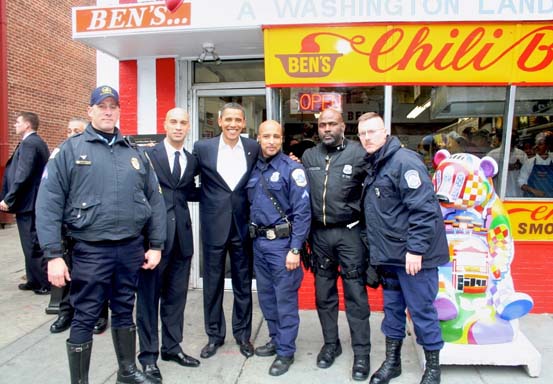
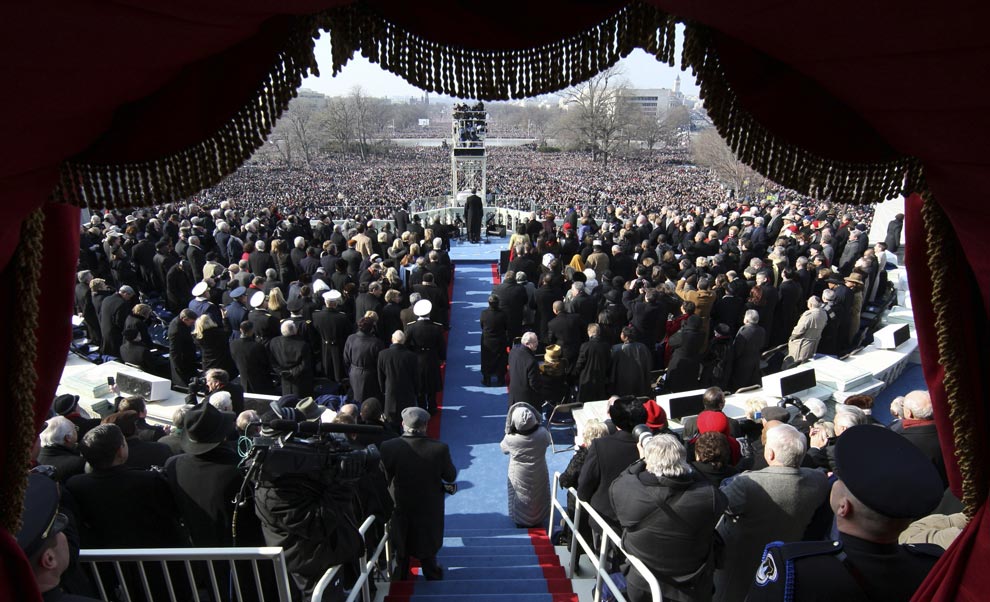
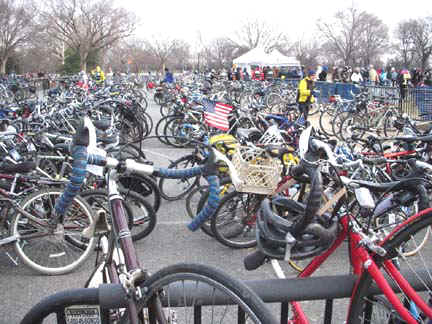
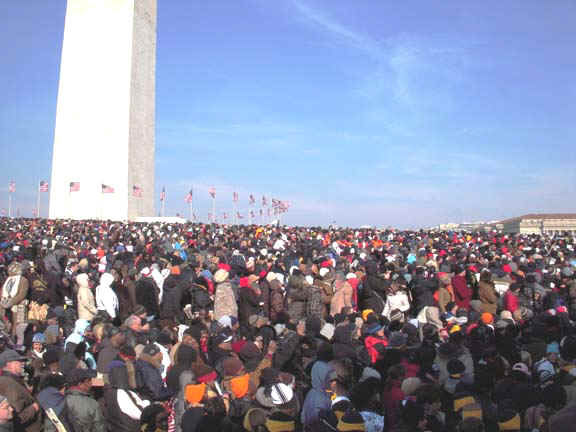 Now
I will further describe the scene at the mall. There were so many
people it was difficult to find a good location to observe the
inauguration. Though it was crowded with people standing shoulder
to shoulder, every one was polite. I walked around the Washington
Monument trying to find a decent vantage point to view a jumbotron, one
of the large screens which were set up. I picked a spot that
gave me a view and I began to observe the program.
Now
I will further describe the scene at the mall. There were so many
people it was difficult to find a good location to observe the
inauguration. Though it was crowded with people standing shoulder
to shoulder, every one was polite. I walked around the Washington
Monument trying to find a decent vantage point to view a jumbotron, one
of the large screens which were set up. I picked a spot that
gave me a view and I began to observe the program. 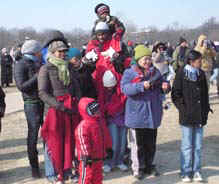 This
event was really about people. What I witnessed was democracy in
action and with purpose. The crowd was very diverse. I
saw all races and nationalities represented. The most moving to
observe were the African Americans. Some were in tears and they
were members of the generation that walked with Martin Luther King. The
MLK holiday was yesterday. I had a chance to talk with some and
had a nice conversation with a family from Florida who traveled to
Washington for this event. Equal in large numbers were Whites,
Hispanics, and Asians. The throngs were a cross section of
America. The other thing that I noticed was the large number of
children of all ages.
This
event was really about people. What I witnessed was democracy in
action and with purpose. The crowd was very diverse. I
saw all races and nationalities represented. The most moving to
observe were the African Americans. Some were in tears and they
were members of the generation that walked with Martin Luther King. The
MLK holiday was yesterday. I had a chance to talk with some and
had a nice conversation with a family from Florida who traveled to
Washington for this event. Equal in large numbers were Whites,
Hispanics, and Asians. The throngs were a cross section of
America. The other thing that I noticed was the large number of
children of all ages. 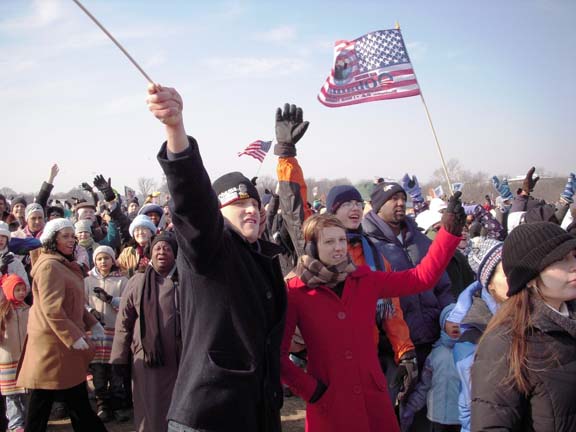 I
could feel human electricity super-charging the air. The feeling
was like one’s emotional state after wining a super-bowl or a national
championship. There was a profound depth to emotions of happiness,
elation and joy. I could see it in many people’s faces.
The spectators became one in purpose like one people united in a common
collective. The temperature was below freezing but I did not feel
it. I don’t know whether the group energy kept me warm or the
closeness of the crowd. I had succumbed to the moment and
became one with the others..
I
could feel human electricity super-charging the air. The feeling
was like one’s emotional state after wining a super-bowl or a national
championship. There was a profound depth to emotions of happiness,
elation and joy. I could see it in many people’s faces.
The spectators became one in purpose like one people united in a common
collective. The temperature was below freezing but I did not feel
it. I don’t know whether the group energy kept me warm or the
closeness of the crowd. I had succumbed to the moment and
became one with the others.. 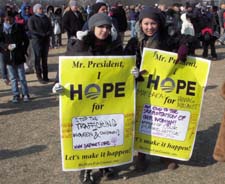 Then
Barack Obama started his acceptance speech. Everybody stopped and
listened to his every word. His speech was magnificent and hit all
the critical points and issues. There was a collective
understanding and agreement. Obama’s speech included “We
will harness the sun and the winds and the soil to fuel our cars
and run our factories”. And we will transform our schools
and colleges and universities to meet the demands of a new age. All this
we can do. All this we will do.” This is exactly my line of
work. I’m a proponent for the use of renewable energy for
facilities. It’s so gratifying that our work is being
acknowledged and will be fully supported by the government.
I take these words to be my marching orders.
Then
Barack Obama started his acceptance speech. Everybody stopped and
listened to his every word. His speech was magnificent and hit all
the critical points and issues. There was a collective
understanding and agreement. Obama’s speech included “We
will harness the sun and the winds and the soil to fuel our cars
and run our factories”. And we will transform our schools
and colleges and universities to meet the demands of a new age. All this
we can do. All this we will do.” This is exactly my line of
work. I’m a proponent for the use of renewable energy for
facilities. It’s so gratifying that our work is being
acknowledged and will be fully supported by the government.
I take these words to be my marching orders. 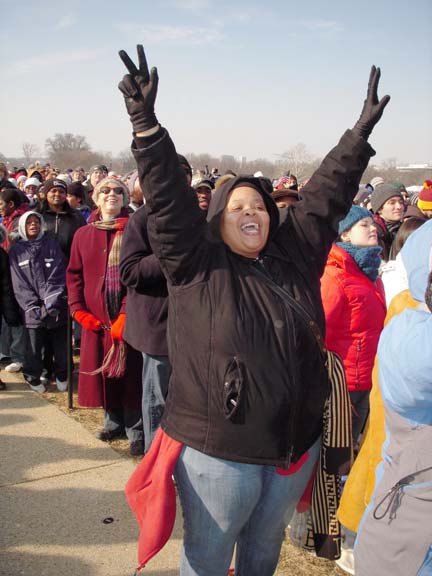


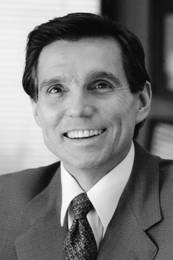
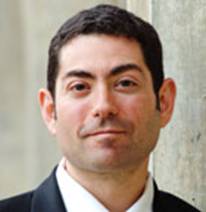
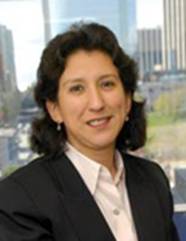
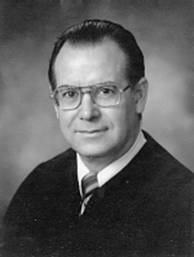
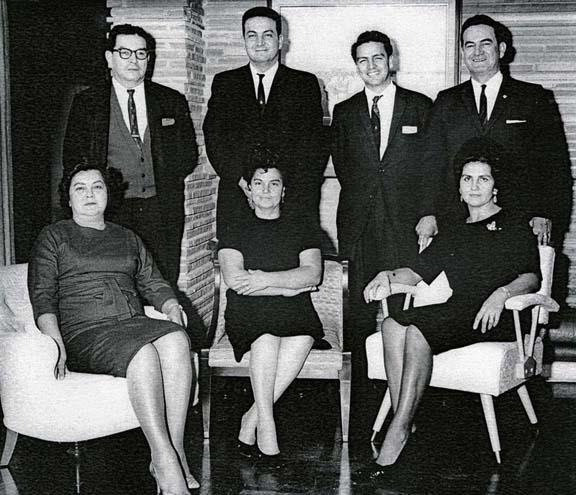
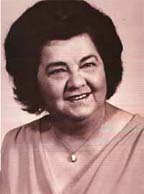 Recently
the community of Corpus Christi, Texas honored my aunt Dr. Clotilde
Garcia by naming a library after her, the
Recently
the community of Corpus Christi, Texas honored my aunt Dr. Clotilde
Garcia by naming a library after her, the 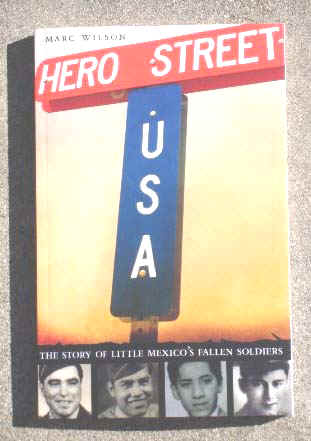 In my research of
In my research of 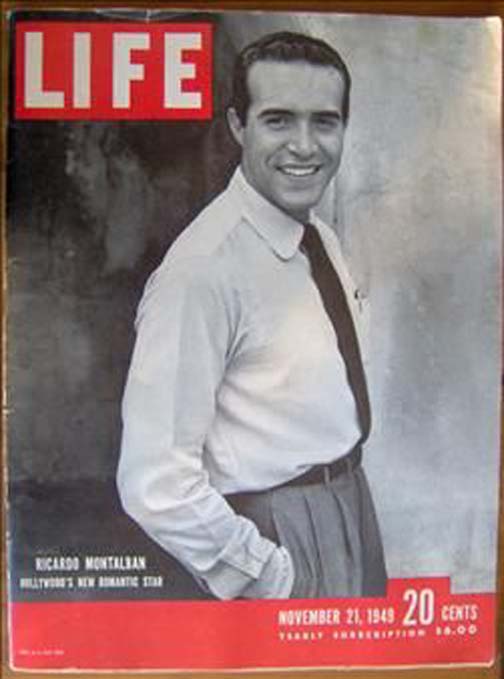
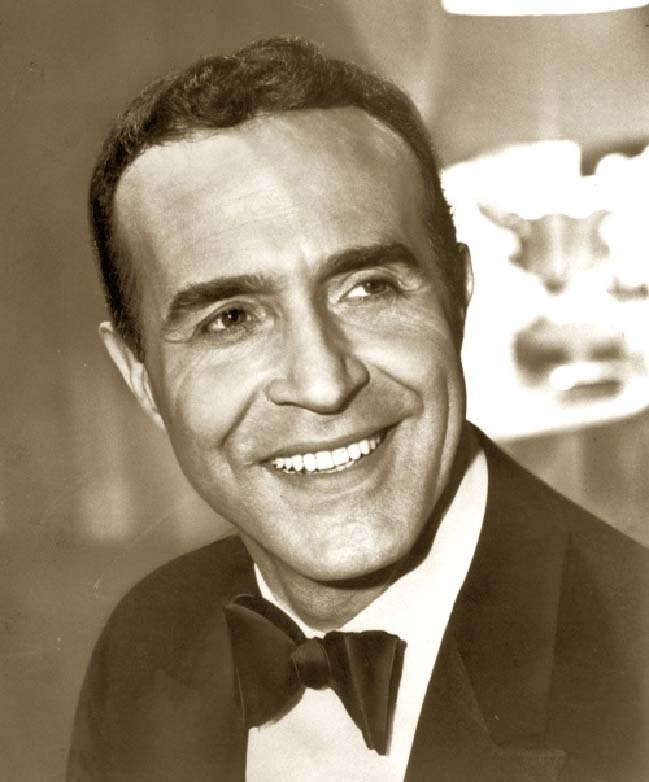



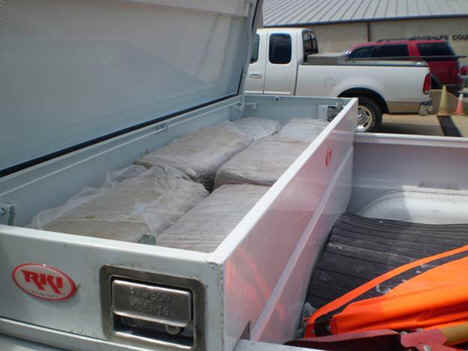



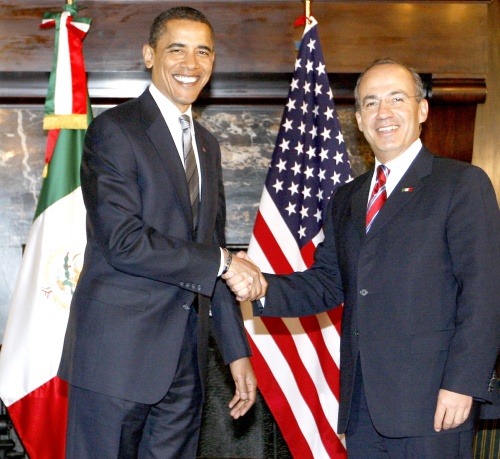
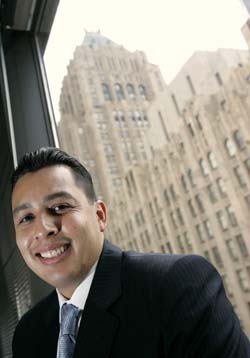 He was young, charismatic, and making great money at a Fortune 500 company. At 23, Detroit-native David Segura was living the good life.
He was young, charismatic, and making great money at a Fortune 500 company. At 23, Detroit-native David Segura was living the good life. Troubled by her low chemistry grades, a young girl by the name of Lydia Villa turned to her adviser at the University of Washington for some career
direction.
She got it. But not in the way she expected.
Troubled by her low chemistry grades, a young girl by the name of Lydia Villa turned to her adviser at the University of Washington for some career
direction.
She got it. But not in the way she expected.
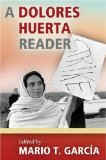 A Dolores Huerta Reader
A Dolores Huerta Reader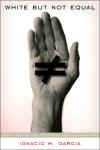 White But Not Equal
White But Not Equal
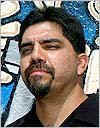 Manuel
Diosdado Castillo Jr.
Manuel
Diosdado Castillo Jr.
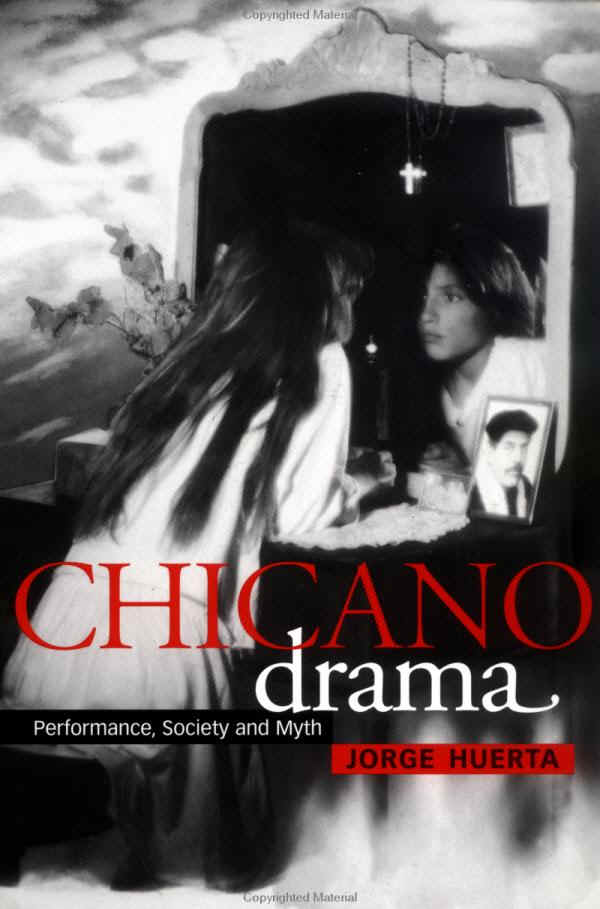
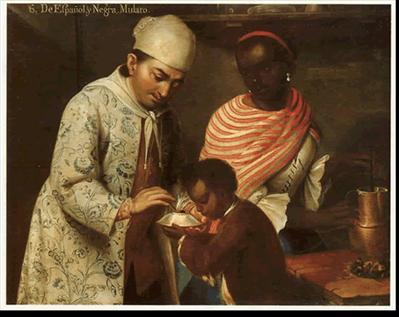 There
are many lists of caste types, of which many hundreds of paintings were
produced, each showing a mother, father and a child, or two.
There
are many lists of caste types, of which many hundreds of paintings were
produced, each showing a mother, father and a child, or two.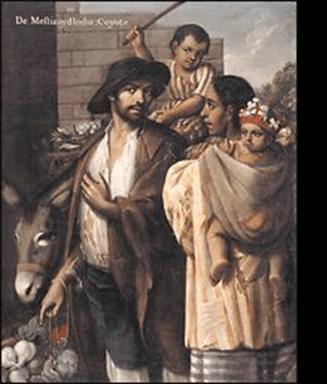
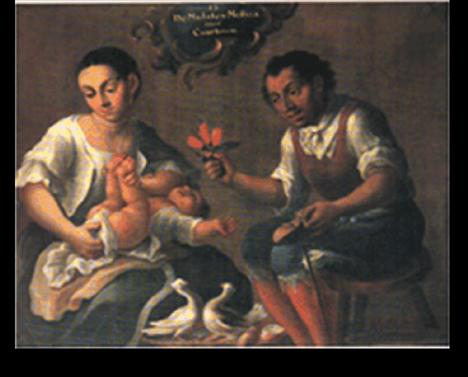

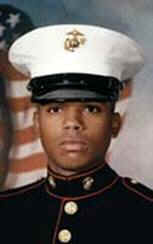 Marine
Sgt. Merlin German
Marine
Sgt. Merlin German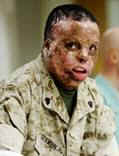 Marine
Sgt. Merlin German was wounded in February of 2005 when Iraqi insurgents
blew up his humvee. The Doctors had given him a 3% chance of survival.
German surprised his doctors by fighting back and recovering to the
point that he was able to leave intensive care and walk on his own. His
parents Hemery and
Marine
Sgt. Merlin German was wounded in February of 2005 when Iraqi insurgents
blew up his humvee. The Doctors had given him a 3% chance of survival.
German surprised his doctors by fighting back and recovering to the
point that he was able to leave intensive care and walk on his own. His
parents Hemery and 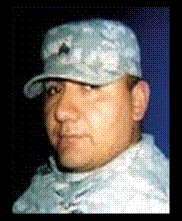 Army
Sgt. Guadalupe Cervantes Ramirez 26,
Army
Sgt. Guadalupe Cervantes Ramirez 26,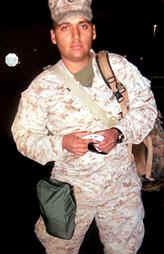 Marine
Cpl. Miguel A. Guzman 21,
Marine
Cpl. Miguel A. Guzman 21,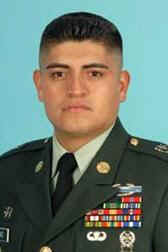 Army
Sgt. 1st Class David Nuñez 27,
Army
Sgt. 1st Class David Nuñez 27,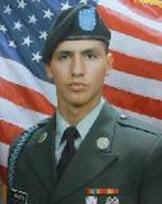 Army
Sgt. John D. Aragon 22,
Army
Sgt. John D. Aragon 22,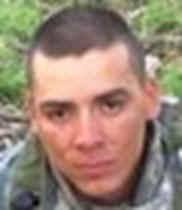 Army
Sgt. Alejandro A. Dominguez 24,
Army
Sgt. Alejandro A. Dominguez 24,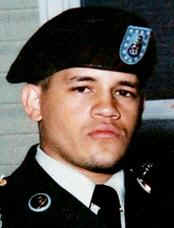 Army
Staff Sgt. Alex R. Jimenez 25,
Army
Staff Sgt. Alex R. Jimenez 25, Army
Staff Sgt. Alex Jimenez funeral was emotional, the casket arrived
covered by an American flag and atop a horse-drawn carriage, escorted by
fellow member of 10th Mountain Division, a pair of fire
truck. A group of bagpipers played patriotic tunes. Many people gave
speeches about Army Staff Sgt. Alex Jimenez. “He was wise and mature,
learned some Arabic for his second tour in
Army
Staff Sgt. Alex Jimenez funeral was emotional, the casket arrived
covered by an American flag and atop a horse-drawn carriage, escorted by
fellow member of 10th Mountain Division, a pair of fire
truck. A group of bagpipers played patriotic tunes. Many people gave
speeches about Army Staff Sgt. Alex Jimenez. “He was wise and mature,
learned some Arabic for his second tour in 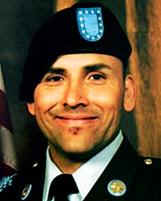 Army
Pvt. Jair De Jesus Garcia 29,
Army
Pvt. Jair De Jesus Garcia 29,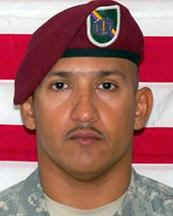 Army
Sgt. Federico G. Borjas 33,
Army
Sgt. Federico G. Borjas 33,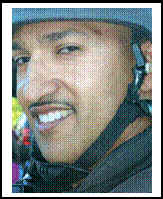
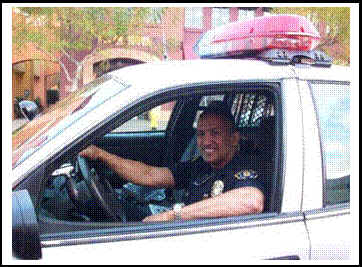
 The
history of Hispanic Americans in the U.S. Coast Guard may be
traced as far back as the early 1800s. Hispanic Americans
performed duties at light house stations as keepers and assistant
keepers, such as Keeper José A. Ramirez, who was the Head Keeper of
the Windward Point Light Station in Cuba, prior to World War II.
Others served on board Revenue Service cutters and as surfmen at
Life-Saving Service stations along the coast. Many gave their
lives in the performance of their duties and others were decorated for
their heroism.
The
history of Hispanic Americans in the U.S. Coast Guard may be
traced as far back as the early 1800s. Hispanic Americans
performed duties at light house stations as keepers and assistant
keepers, such as Keeper José A. Ramirez, who was the Head Keeper of
the Windward Point Light Station in Cuba, prior to World War II.
Others served on board Revenue Service cutters and as surfmen at
Life-Saving Service stations along the coast. Many gave their
lives in the performance of their duties and others were decorated for
their heroism.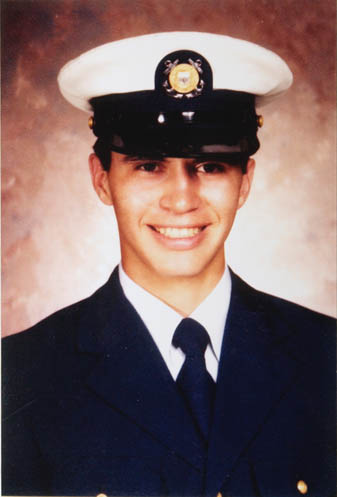
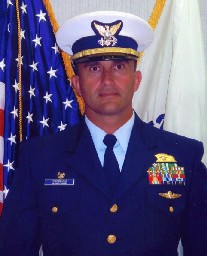
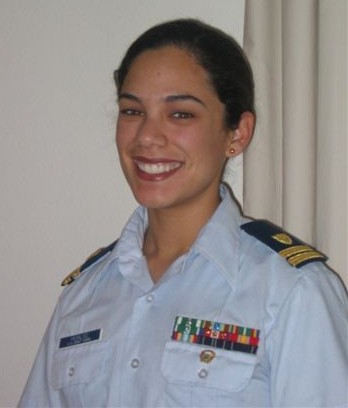
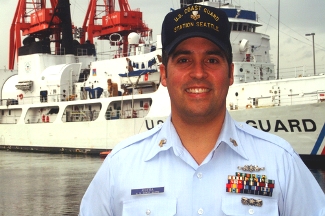
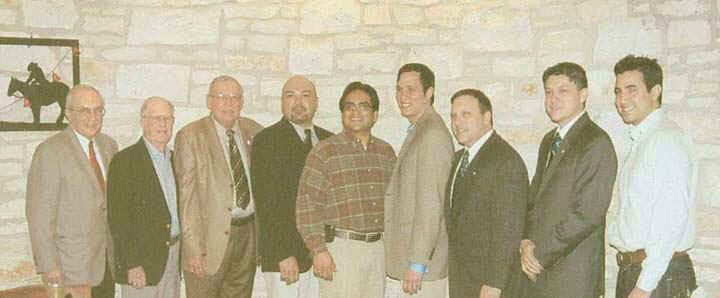

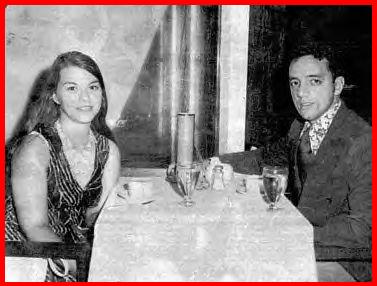
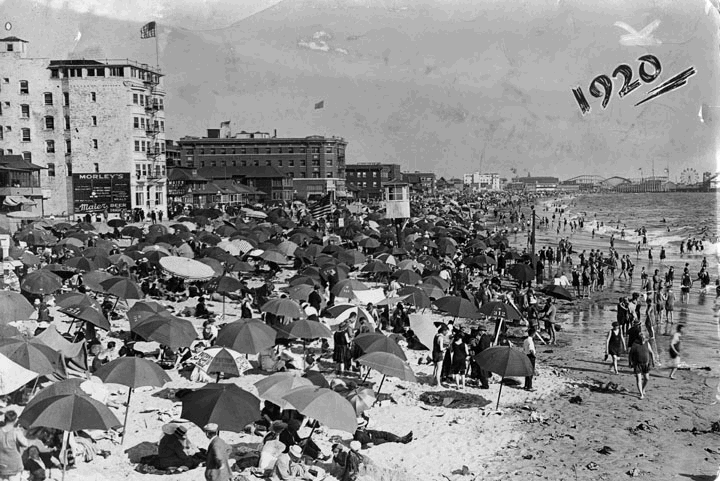
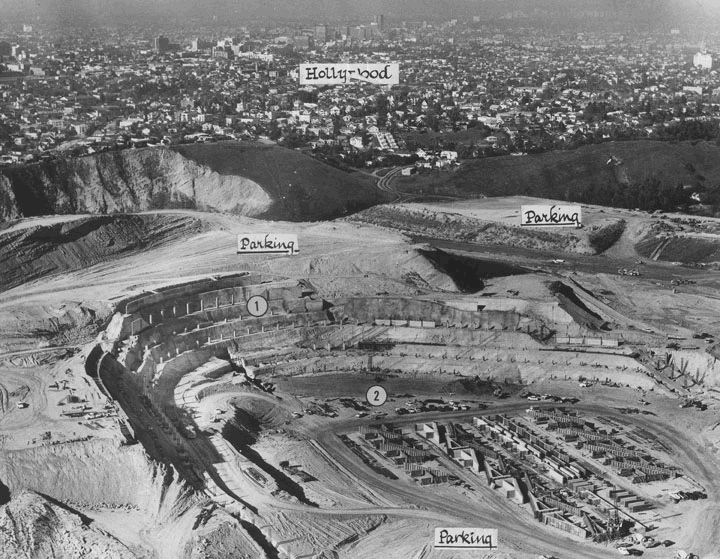
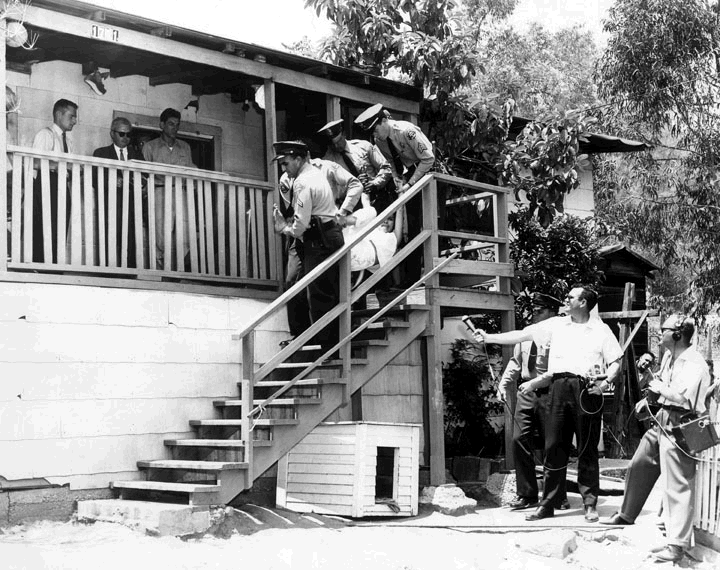
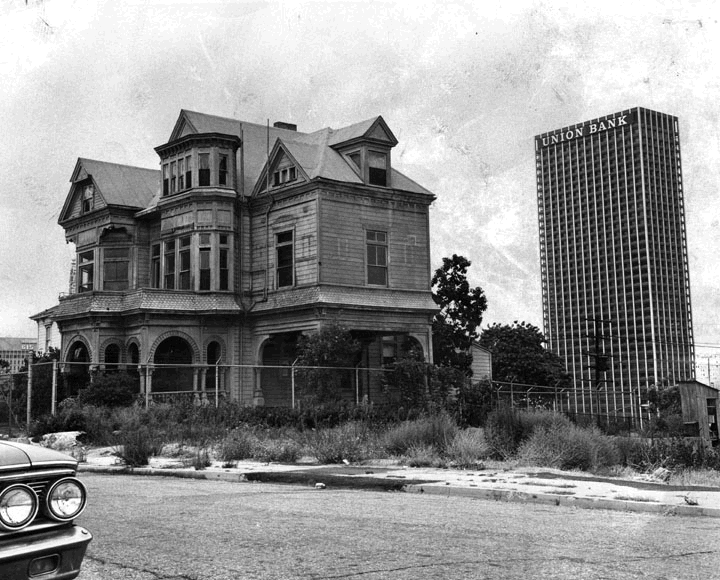
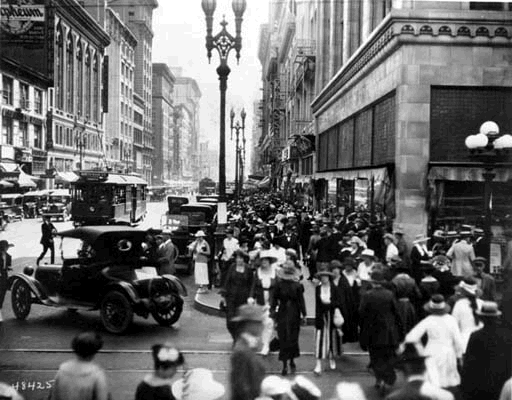

 At
a historical gathering not long ago, Richard Young of Tesuque
approached me and introduced himself. We fell into conversation
about Southwestern history, and the subject of Gov. Juan Bautista de
Anza came up.
At
a historical gathering not long ago, Richard Young of Tesuque
approached me and introduced himself. We fell into conversation
about Southwestern history, and the subject of Gov. Juan Bautista de
Anza came up.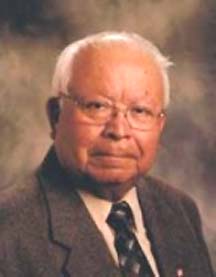

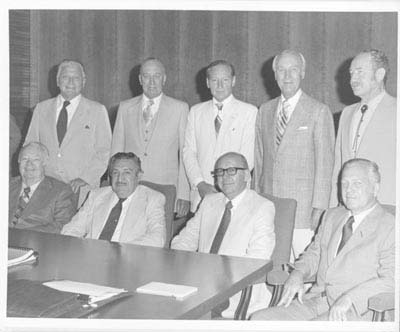
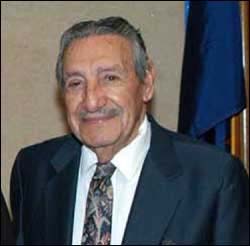 He lives not far from where it all began. Raul H. Castro, former
judge, governor and ambassador, lives in a 102-year-old house in
Nogales, Ariz., just footsteps from the Mexican border. On the other
side lies the country where he was born. But it is in this country
where he
He lives not far from where it all began. Raul H. Castro, former
judge, governor and ambassador, lives in a 102-year-old house in
Nogales, Ariz., just footsteps from the Mexican border. On the other
side lies the country where he was born. But it is in this country
where he 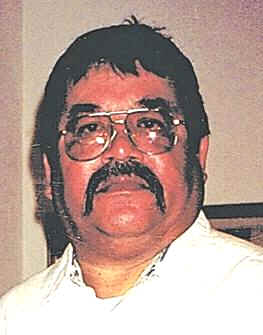
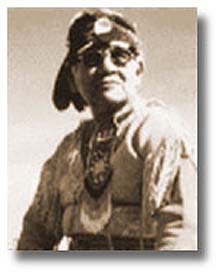

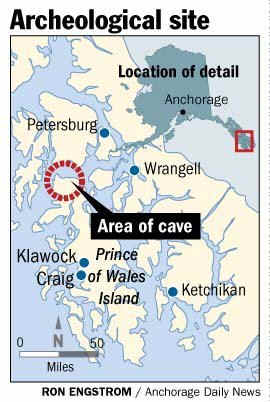 But
some of them migrated south and their descendents can be found today
in coastal Native American populations in California, Mexico, Ecuador,
Chile and Argentina.
But
some of them migrated south and their descendents can be found today
in coastal Native American populations in California, Mexico, Ecuador,
Chile and Argentina.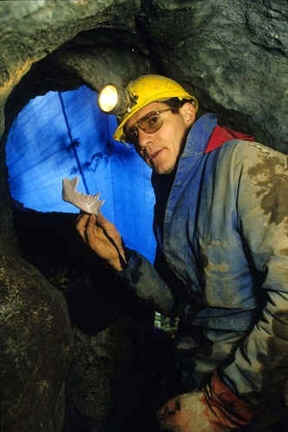 "Our
oral traditions always talk about the presence of an older population
being here when they arrived," said Worl, a Juneau-based Tlingit
who teaches cultural anthropology at the University of Alaska
Southeast.
"Our
oral traditions always talk about the presence of an older population
being here when they arrived," said Worl, a Juneau-based Tlingit
who teaches cultural anthropology at the University of Alaska
Southeast.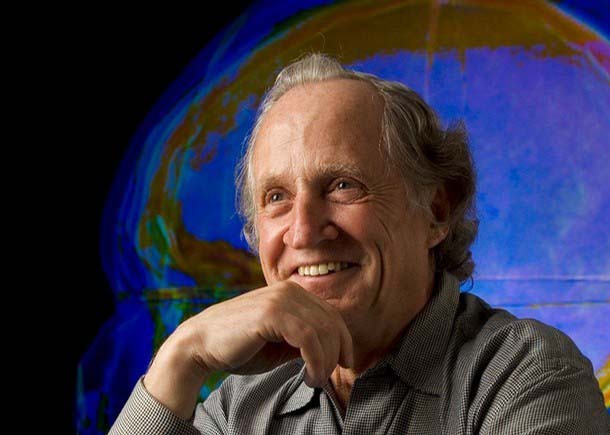
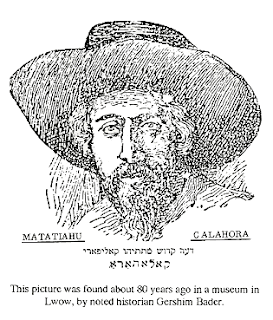
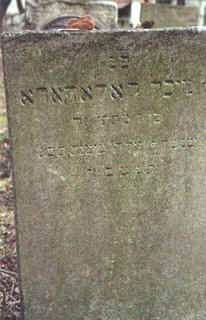

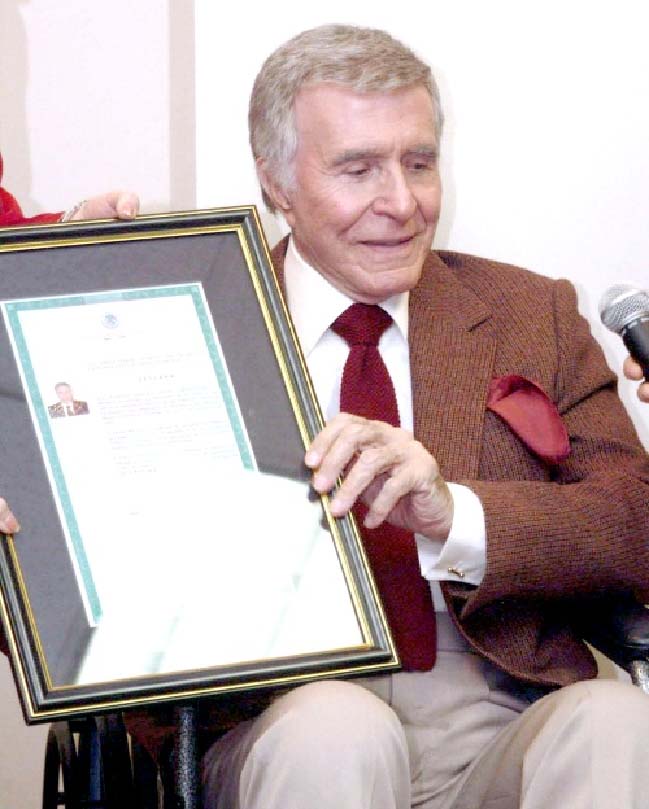
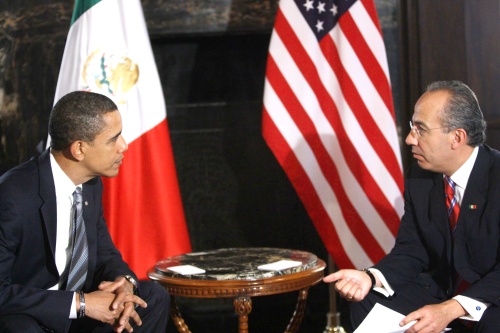
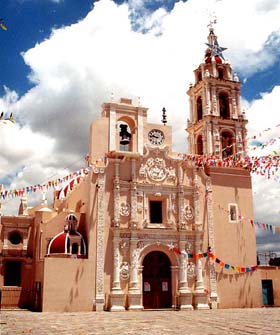 Church of Los Reyes de Juárez
Church of Los Reyes de Juárez
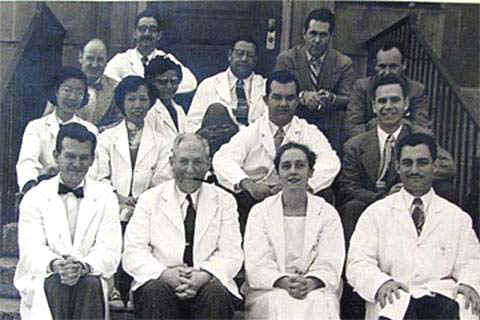
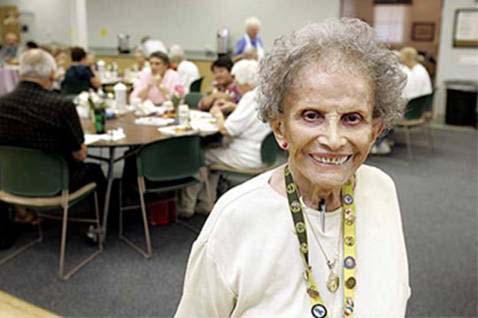
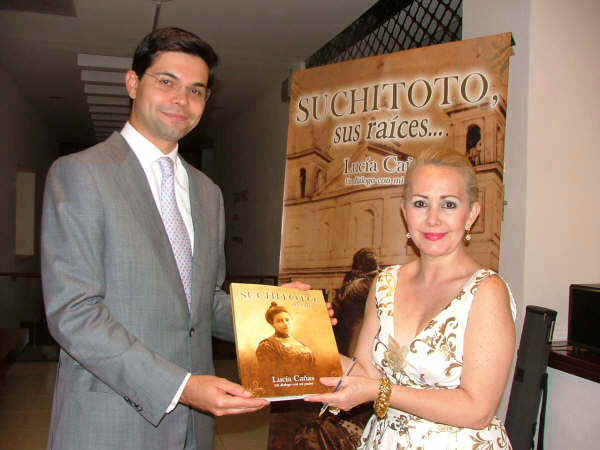
 Using the online census, President-Elect Barack Obama would learn that
public speaking skills and stage presence run in his family—his
maternal great-great-grandfather, Charles Payne, was noted as an
auctioneer by profession in the census. With just a few keystrokes,
he’d find that Charles and his wife Della were born respectively in
Missouri and Ohio and living with their six children in Johnson
County, Kansas, in 1900. Obama’s great-grandfather, Rolla, was
listed as their second child.
Using the online census, President-Elect Barack Obama would learn that
public speaking skills and stage presence run in his family—his
maternal great-great-grandfather, Charles Payne, was noted as an
auctioneer by profession in the census. With just a few keystrokes,
he’d find that Charles and his wife Della were born respectively in
Missouri and Ohio and living with their six children in Johnson
County, Kansas, in 1900. Obama’s great-grandfather, Rolla, was
listed as their second child.